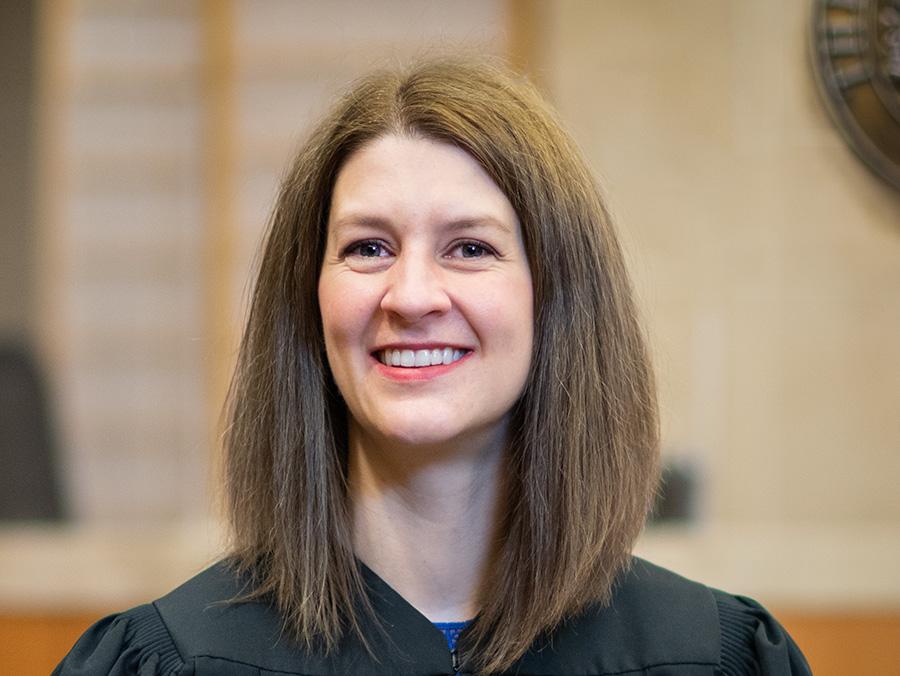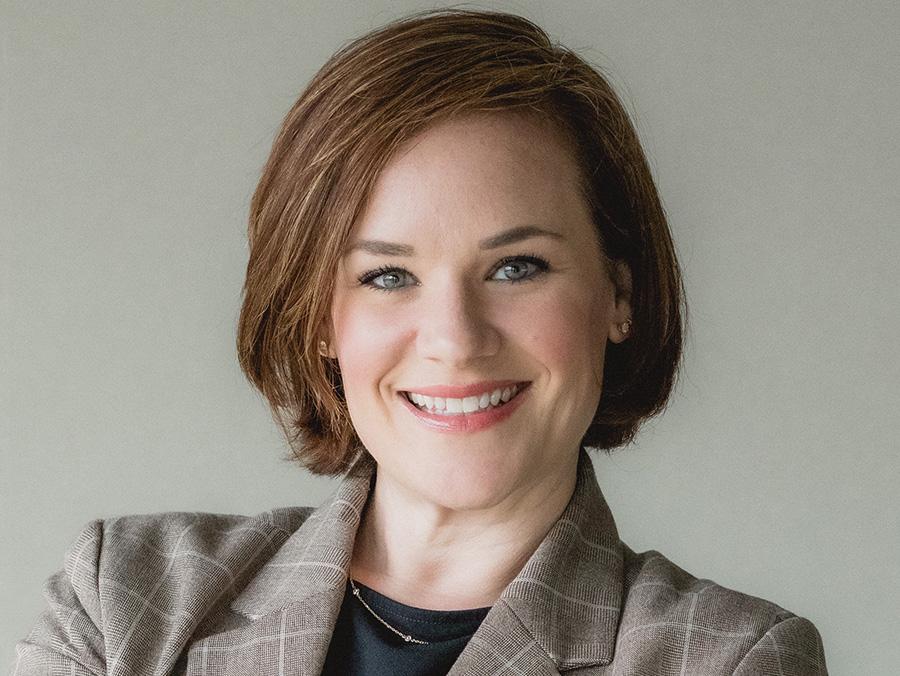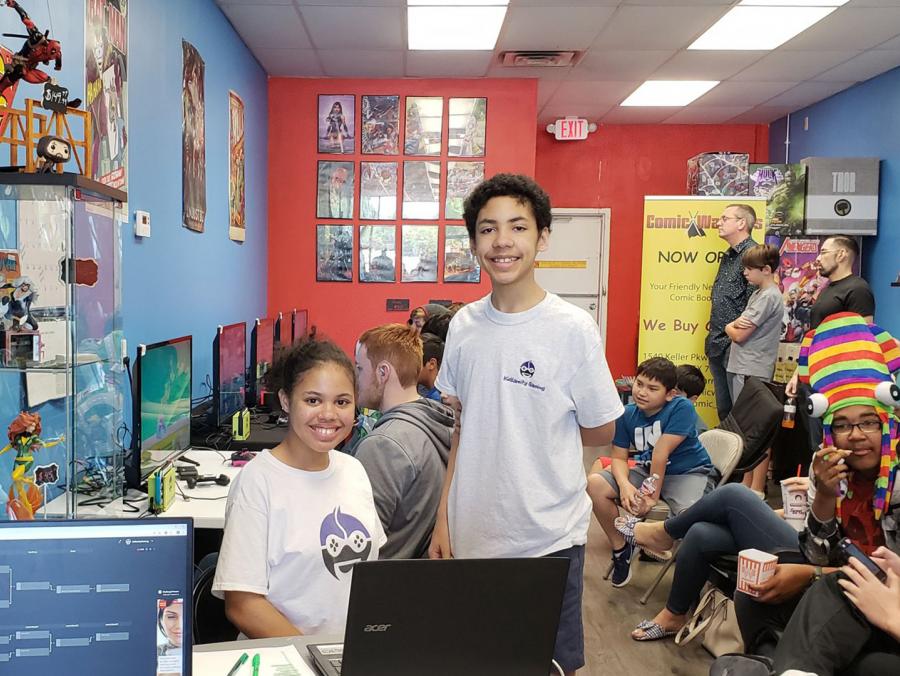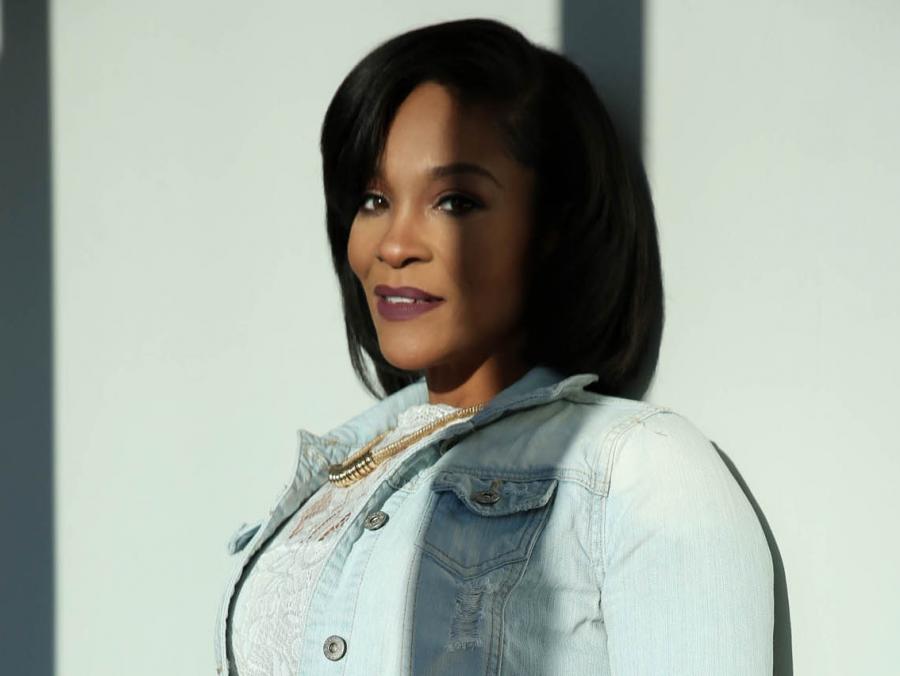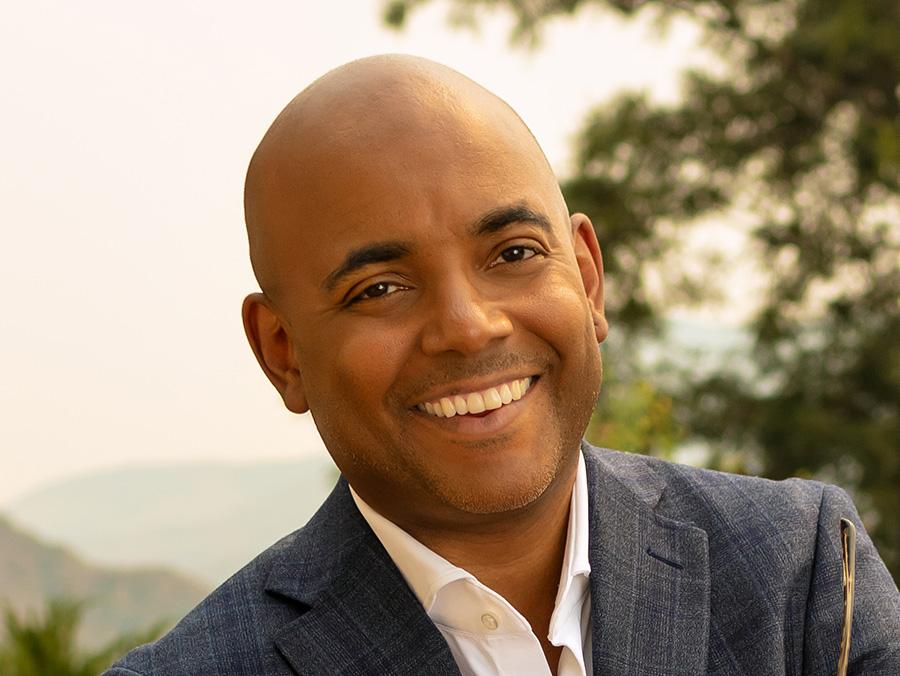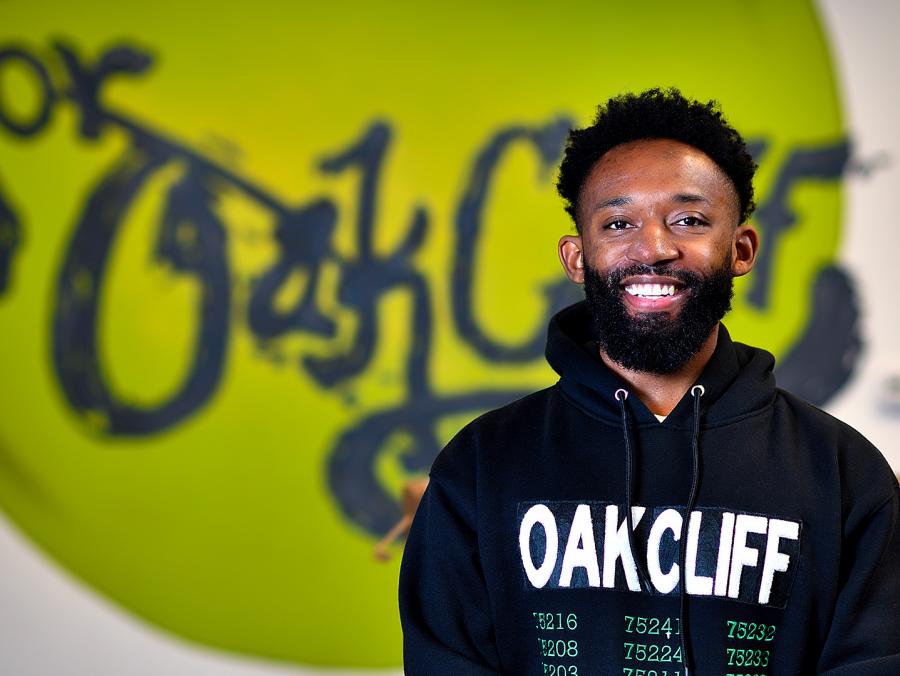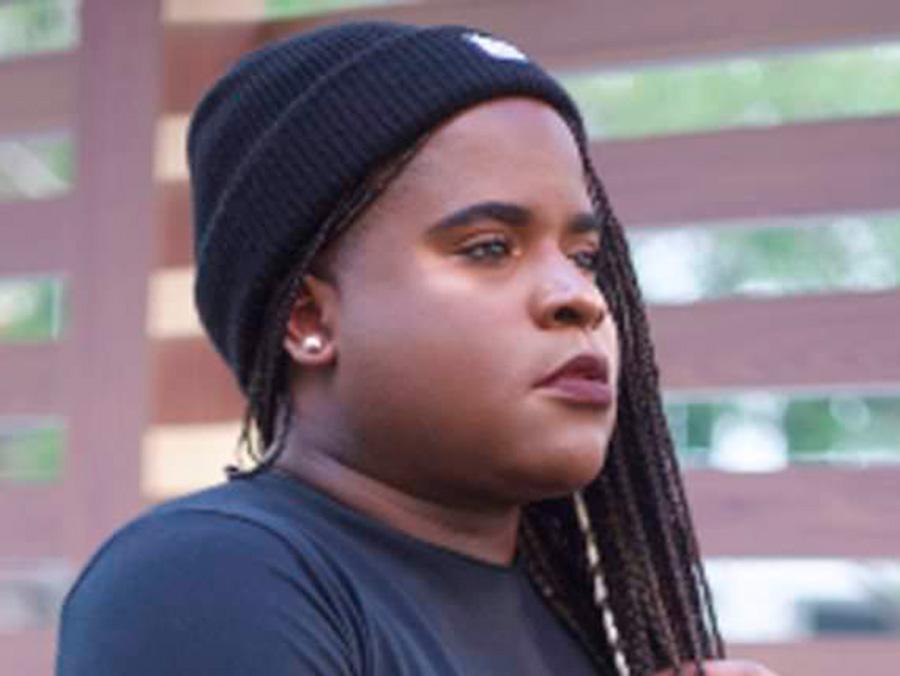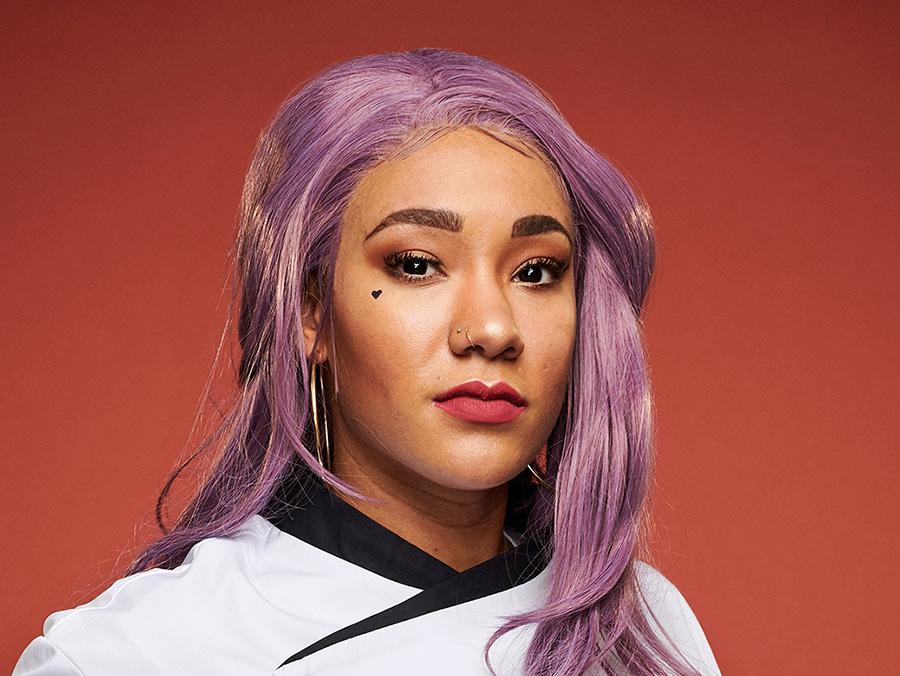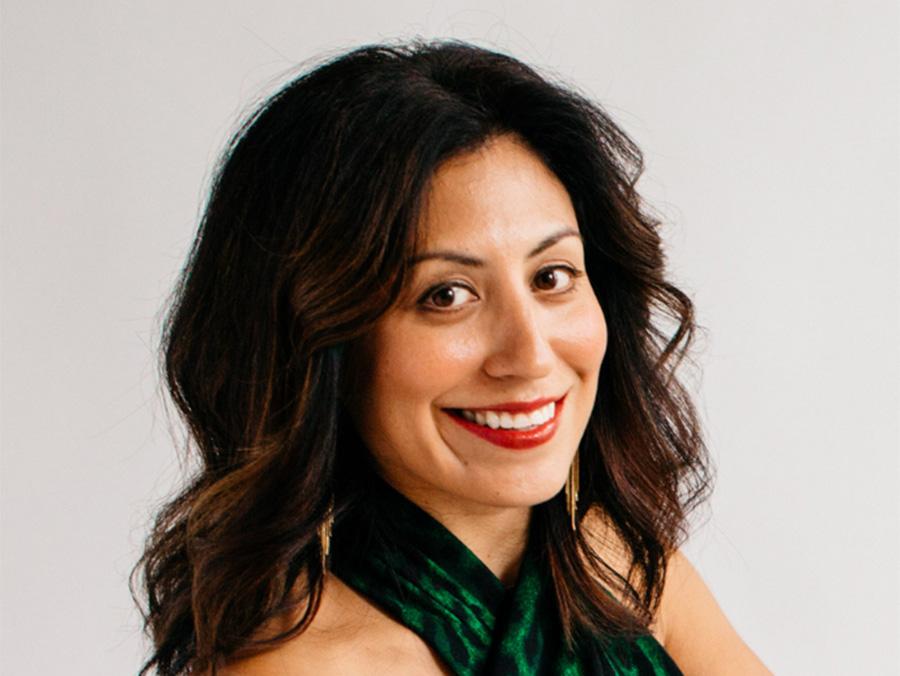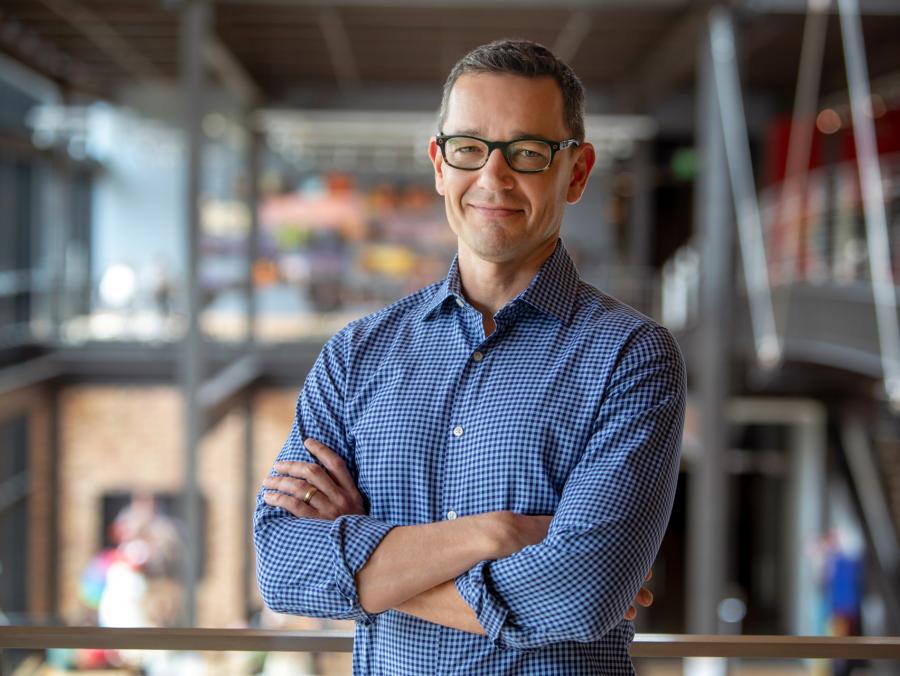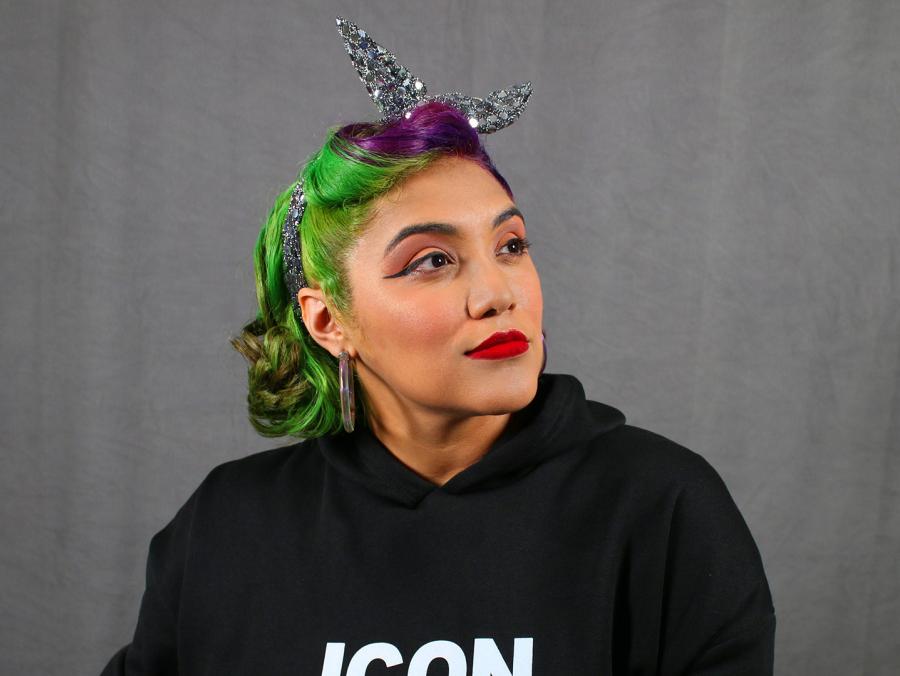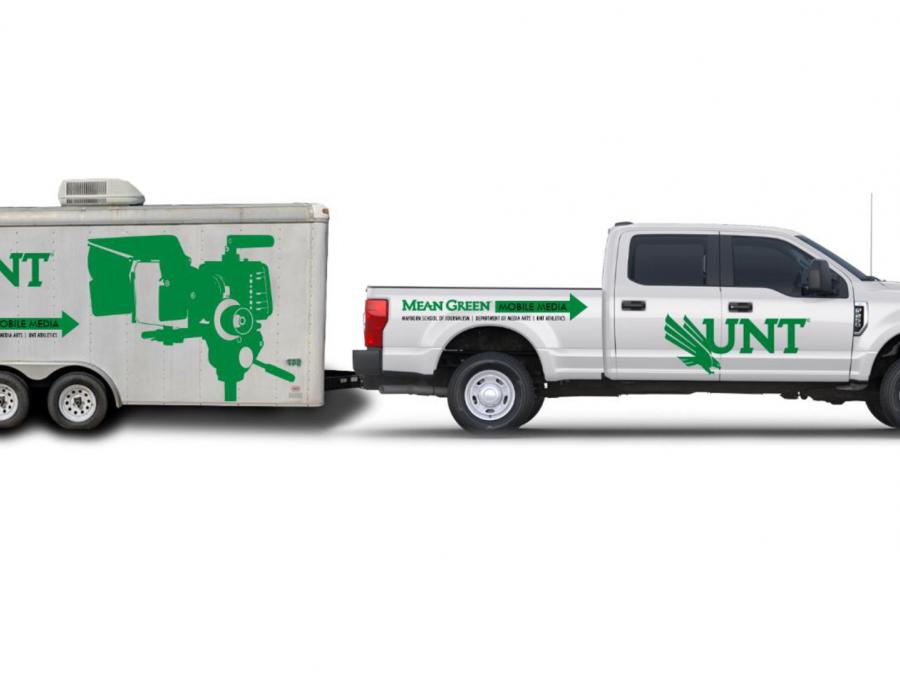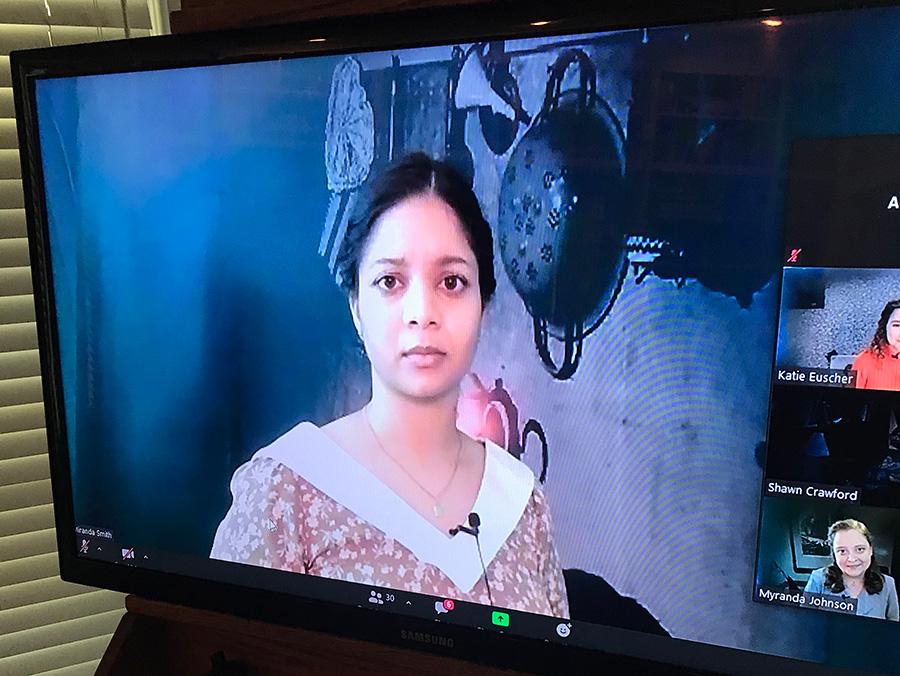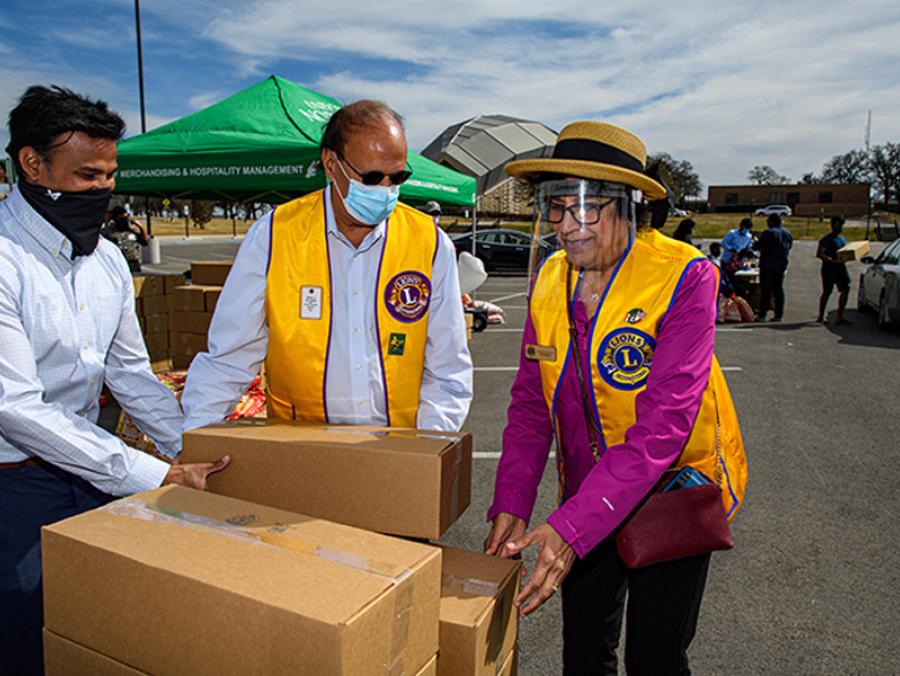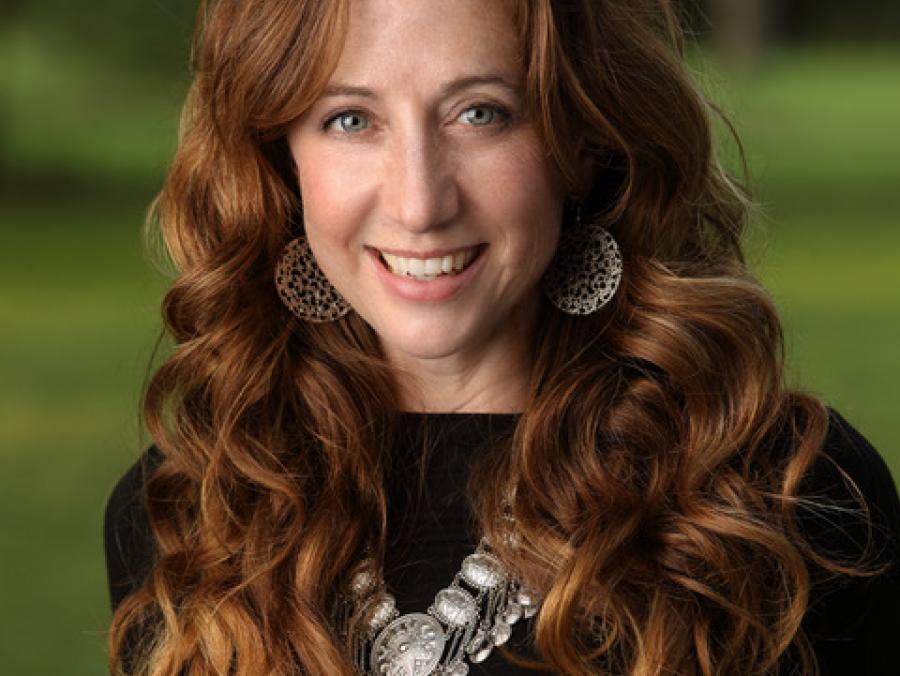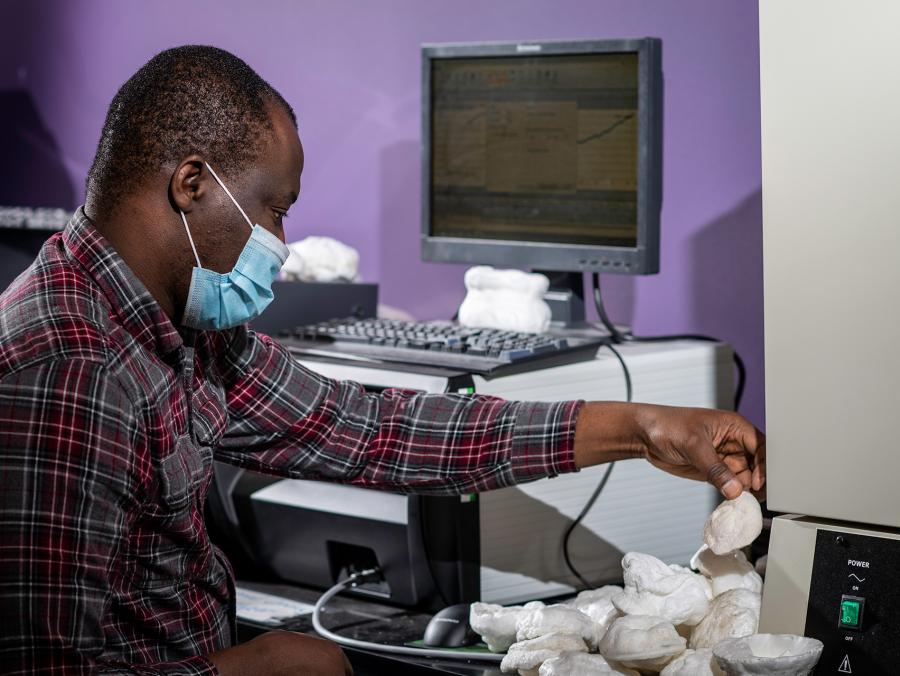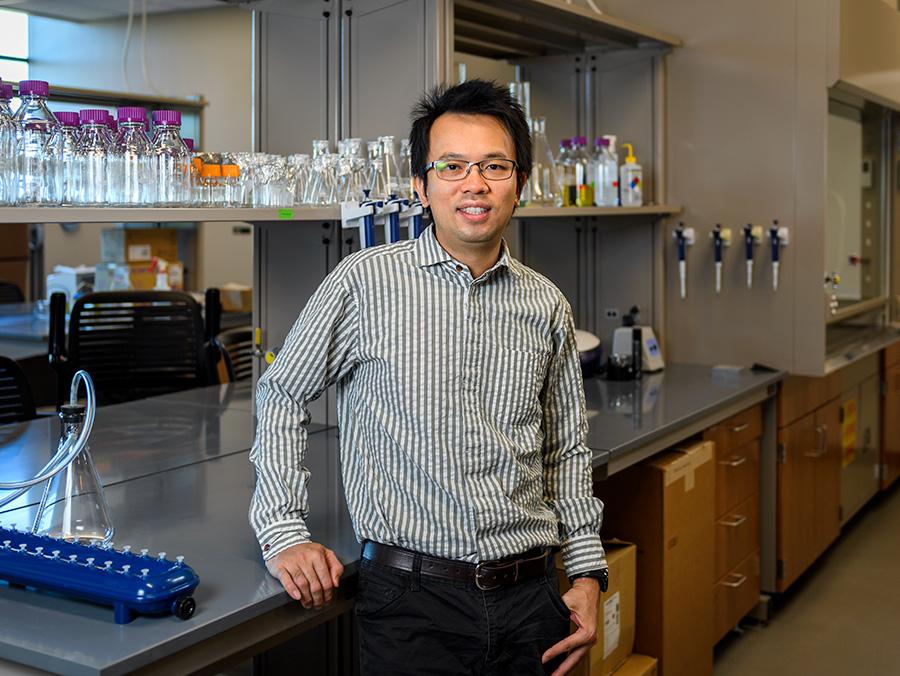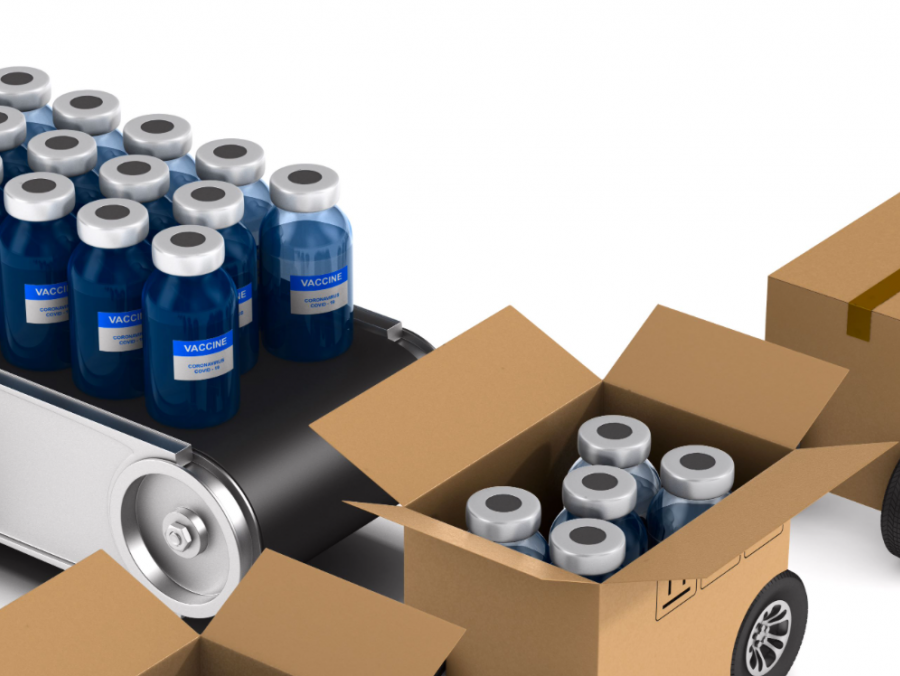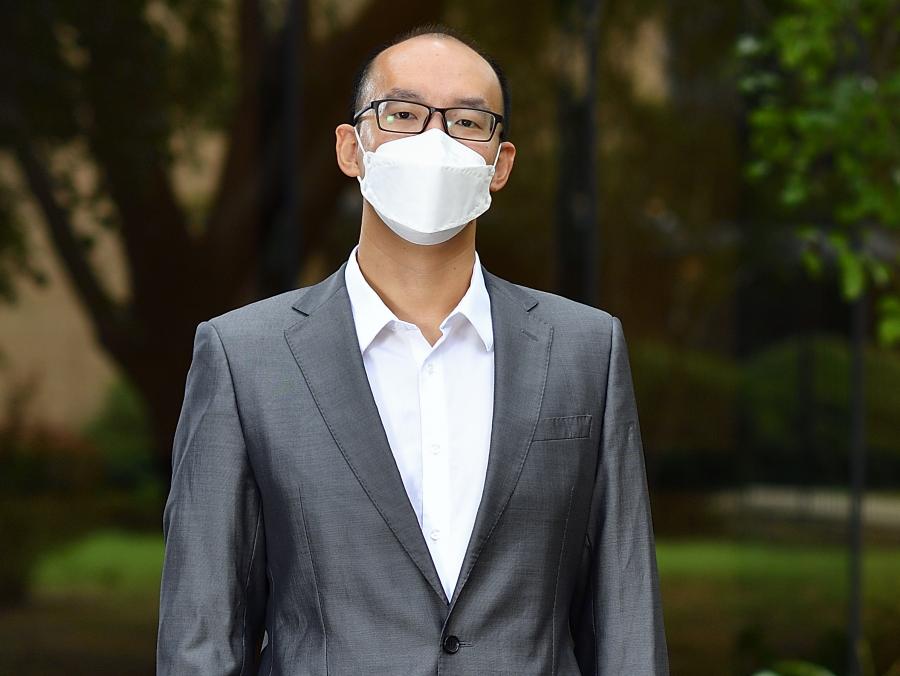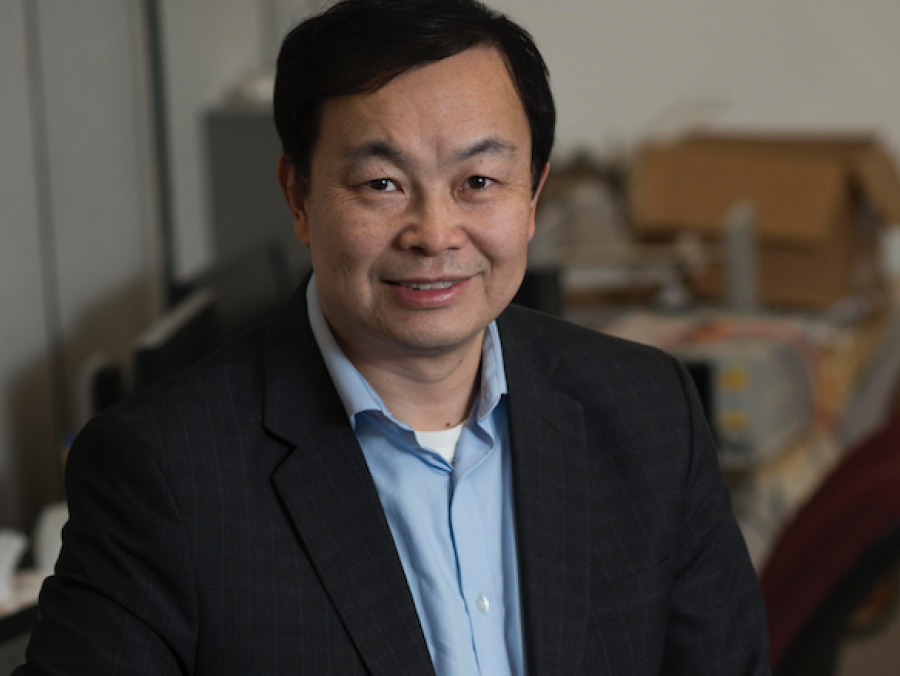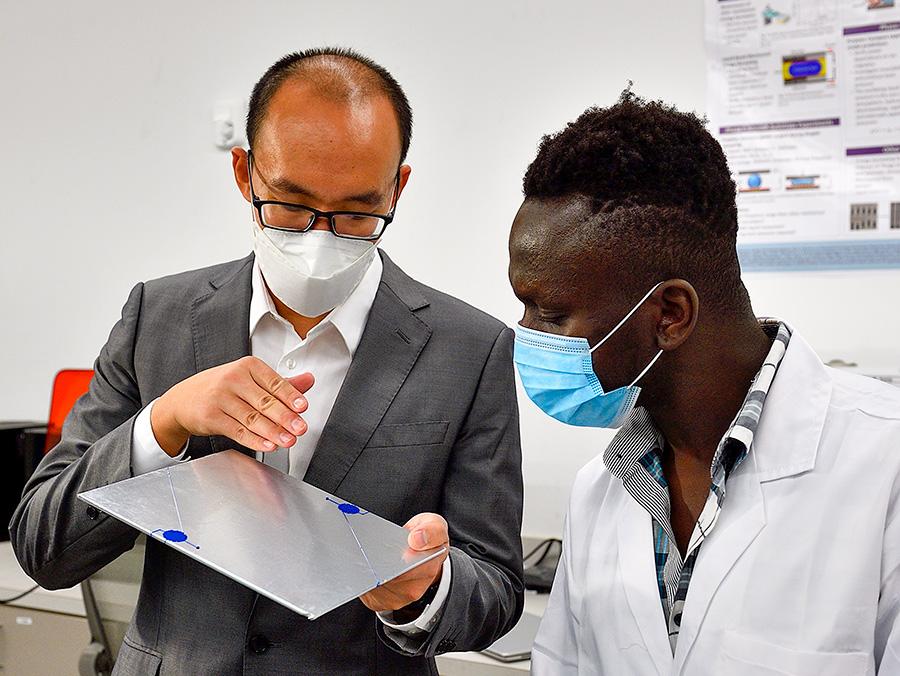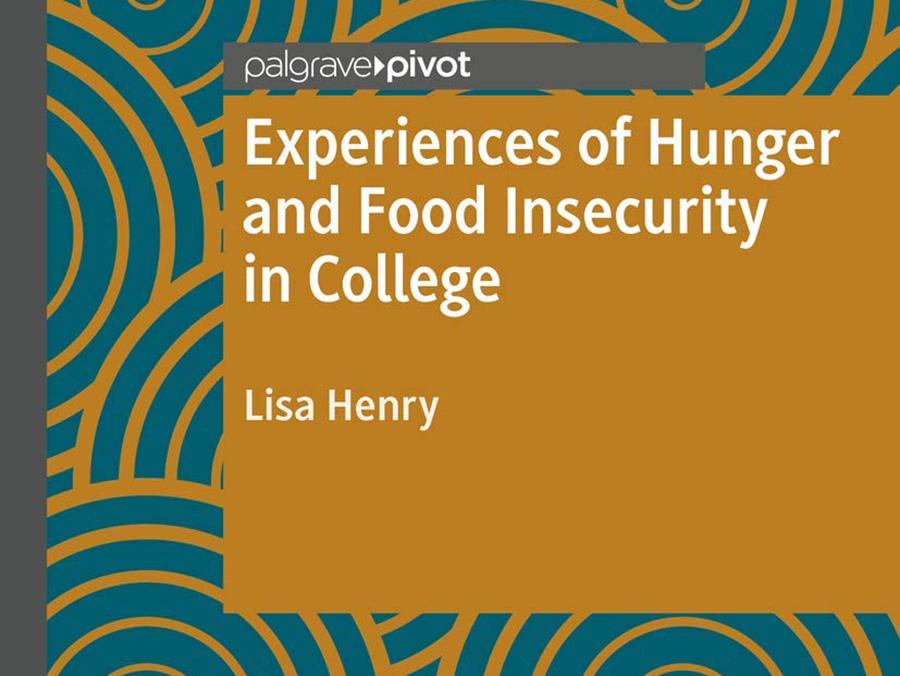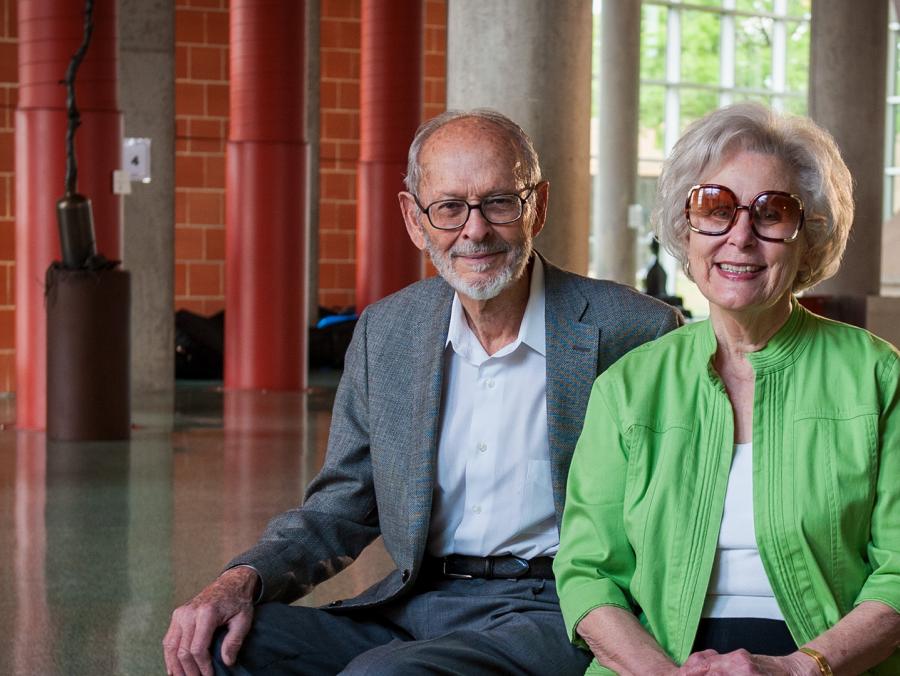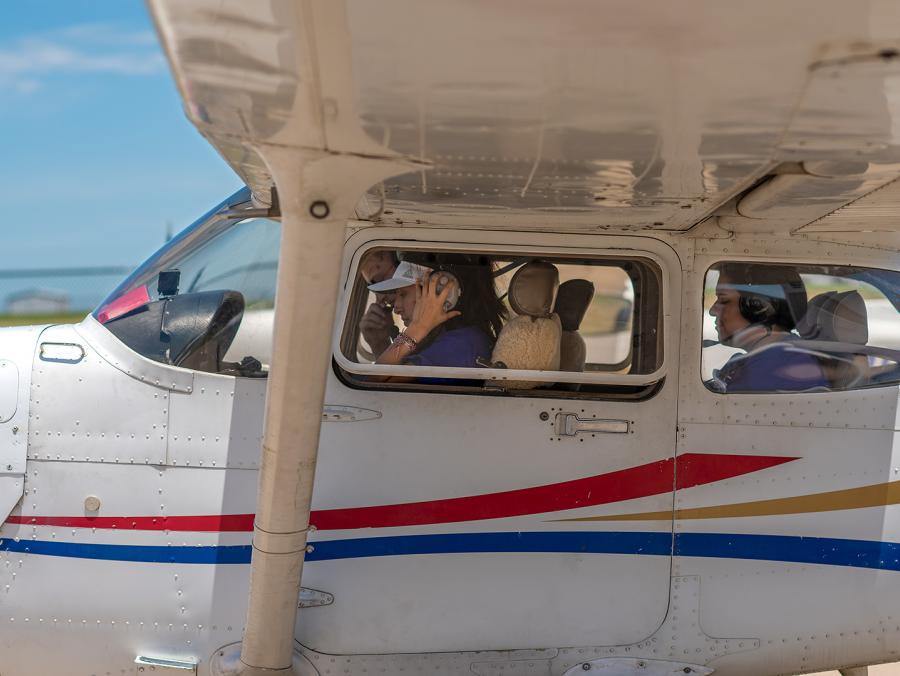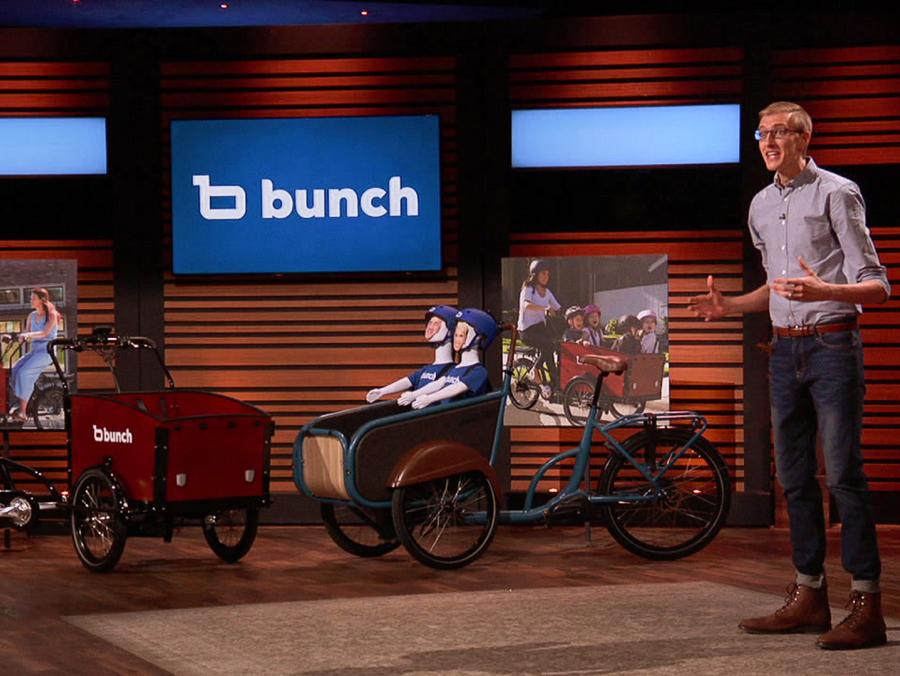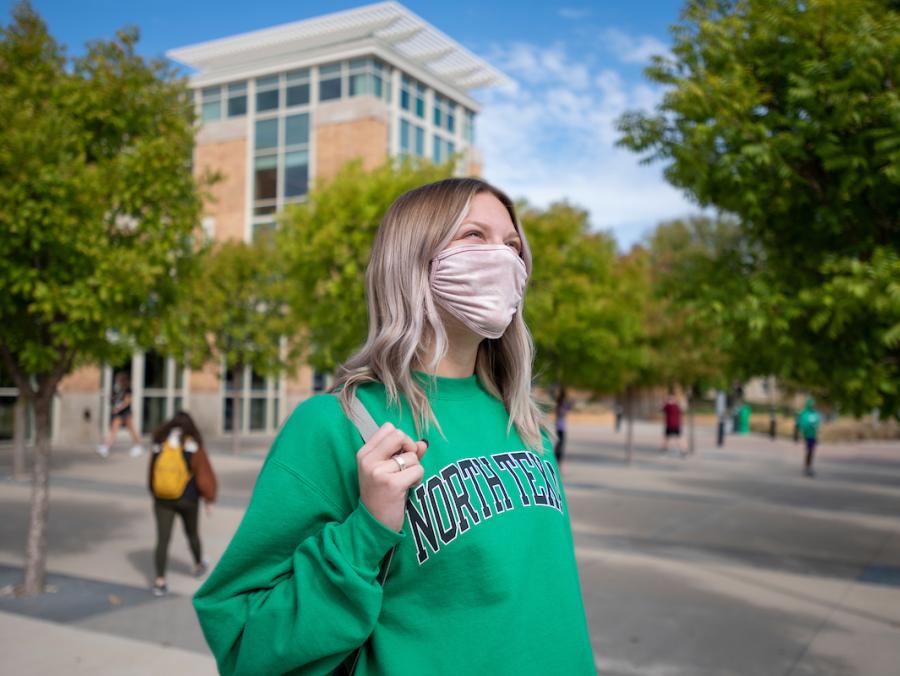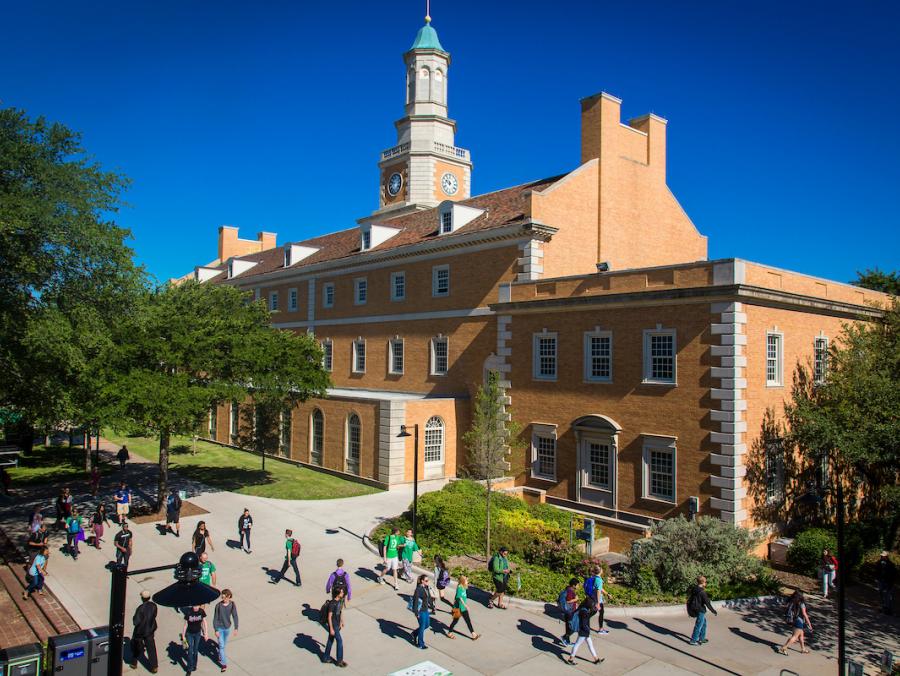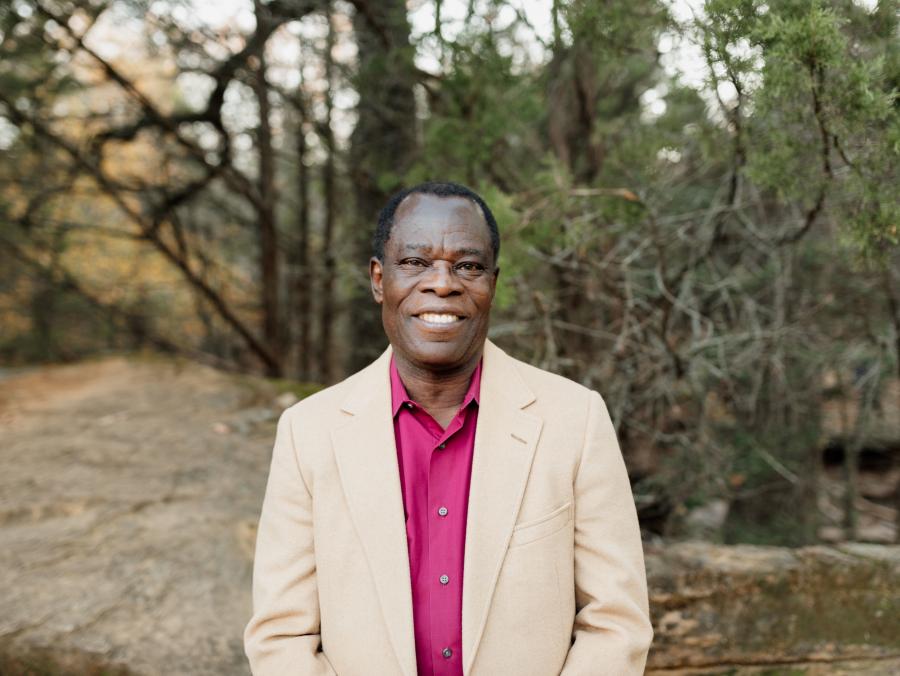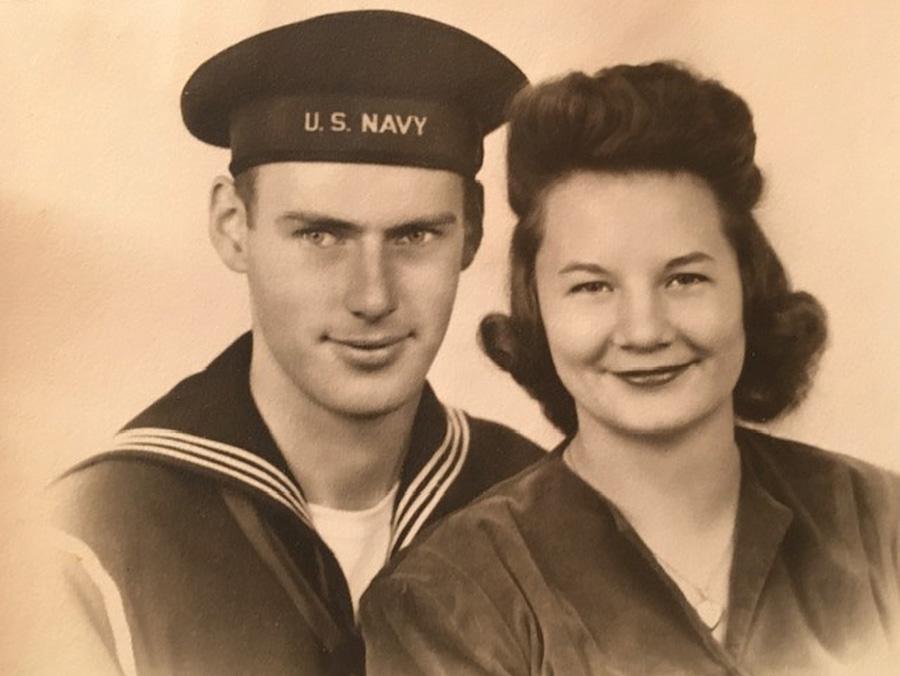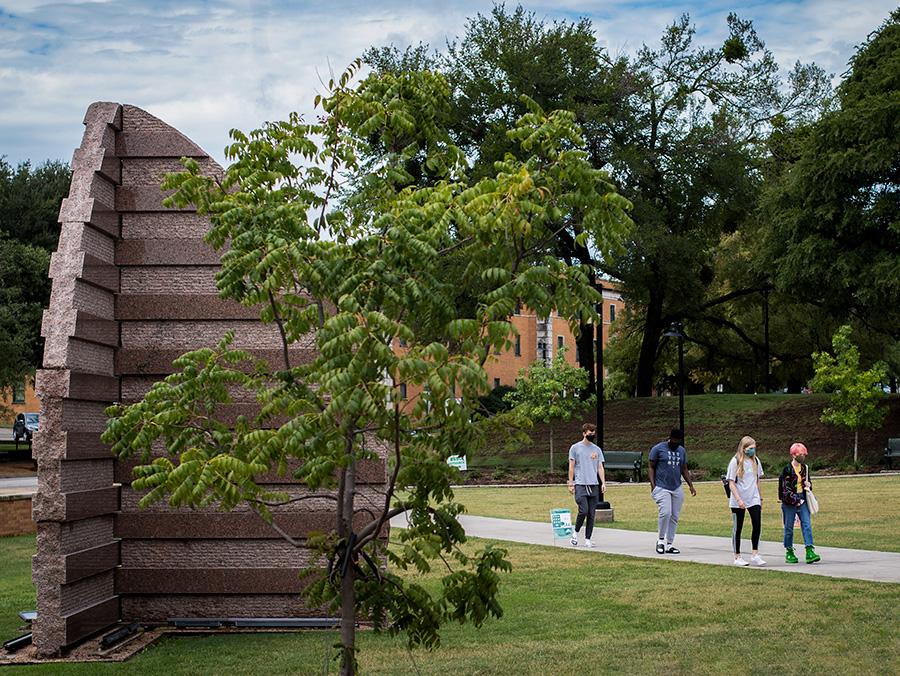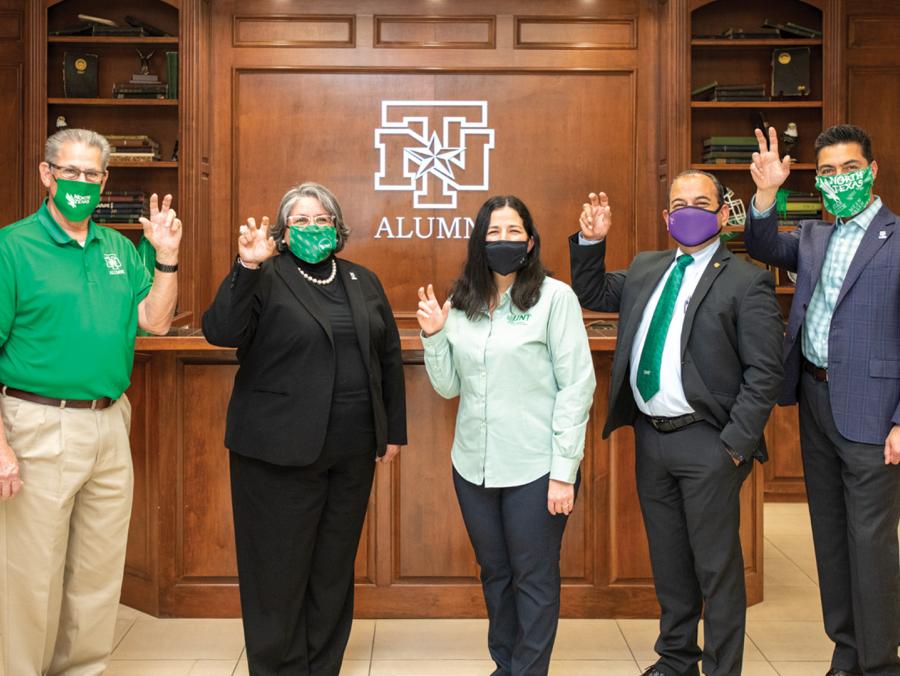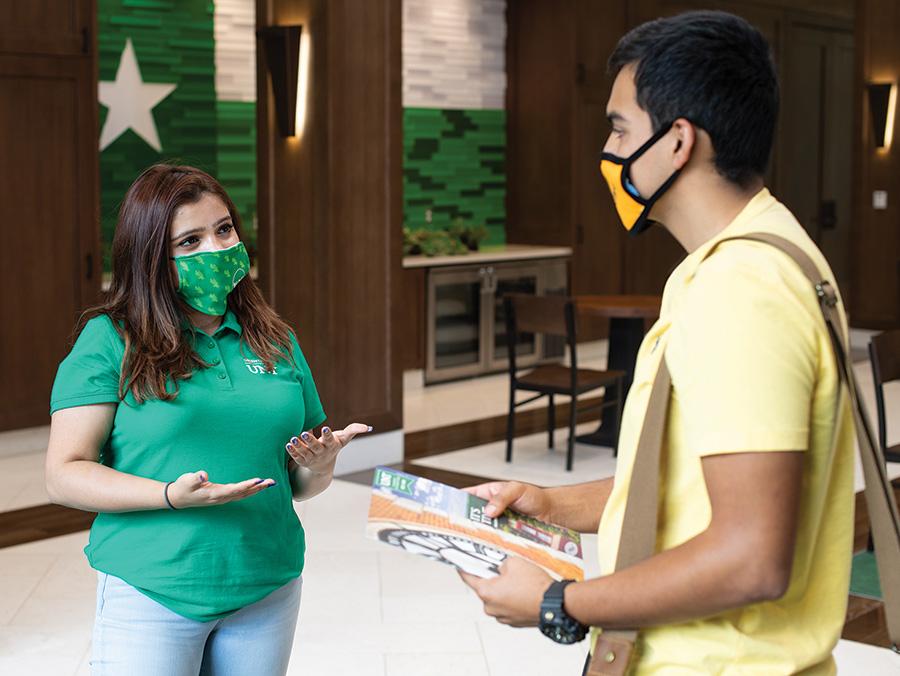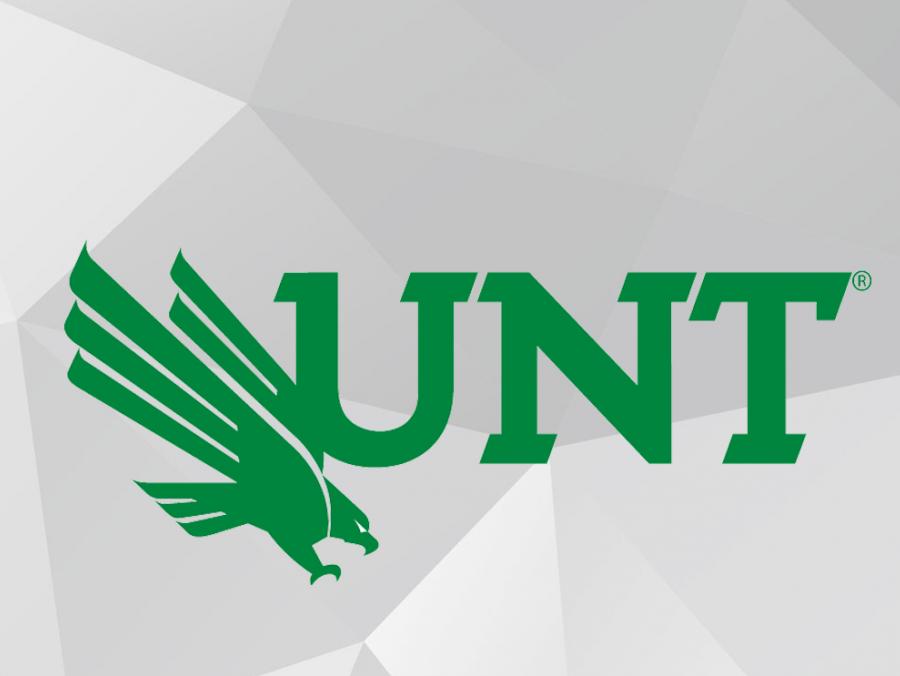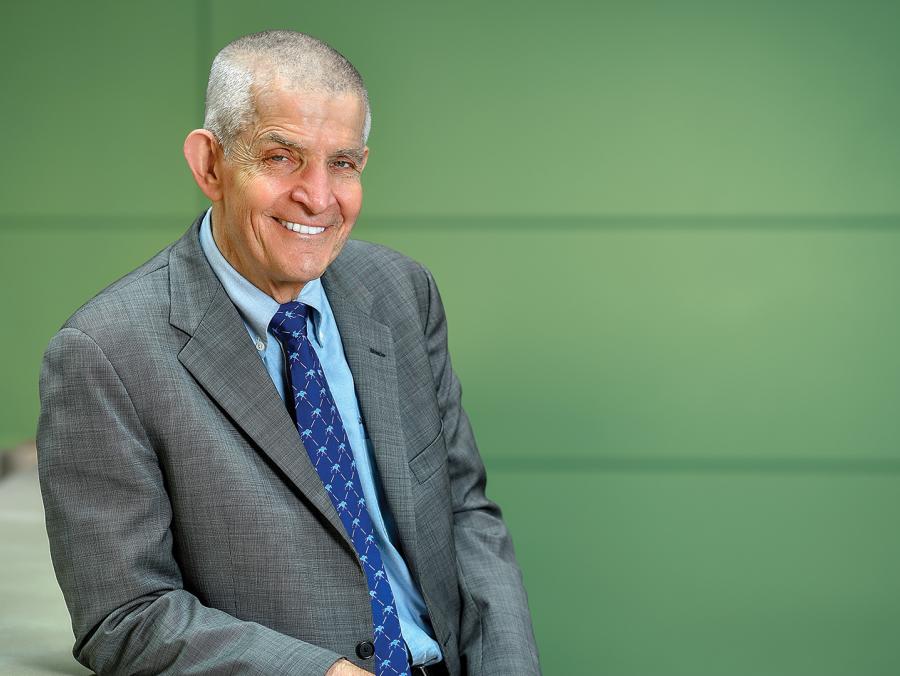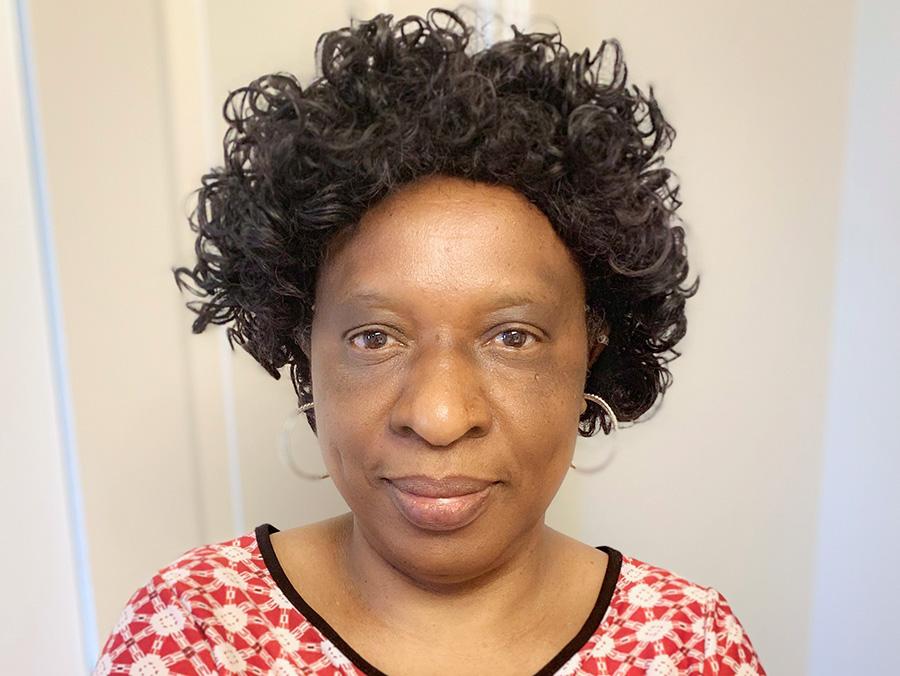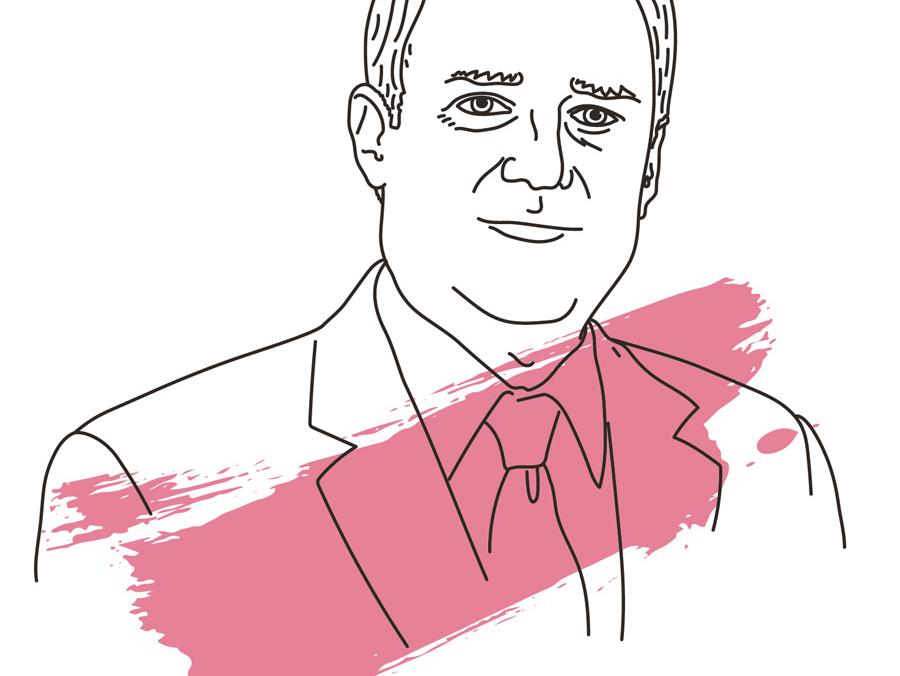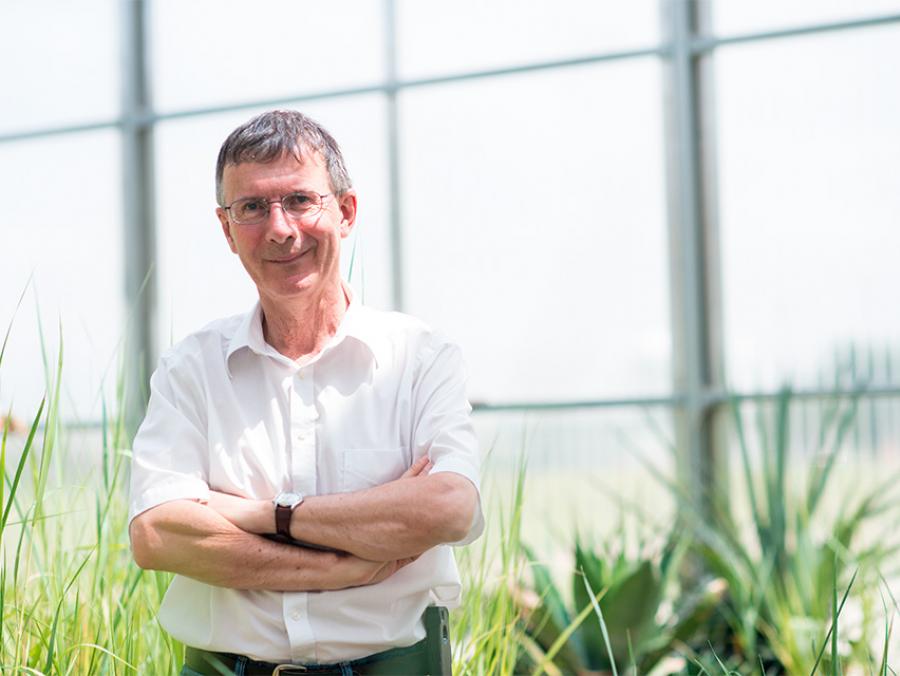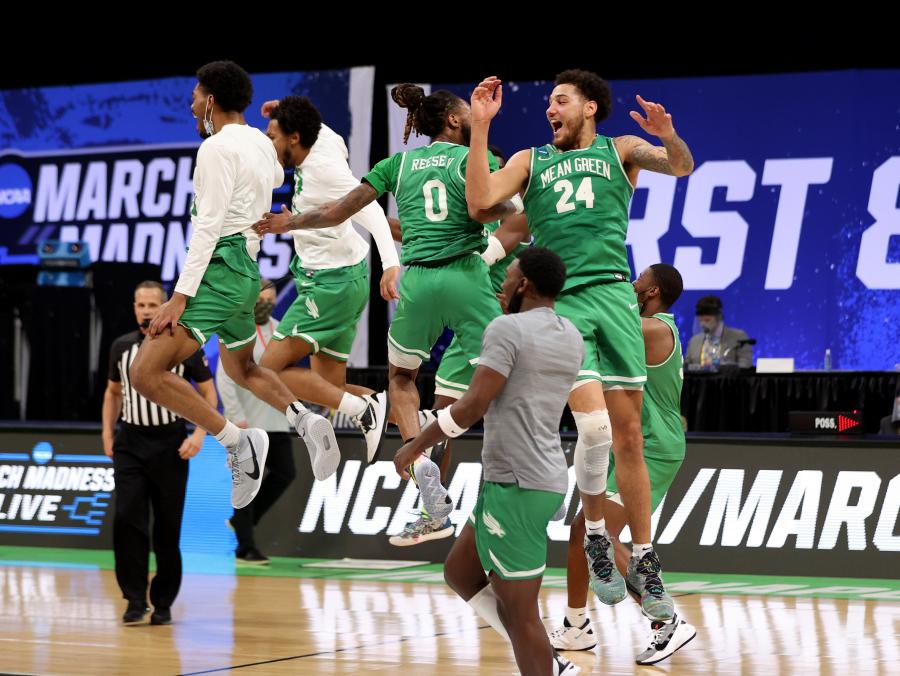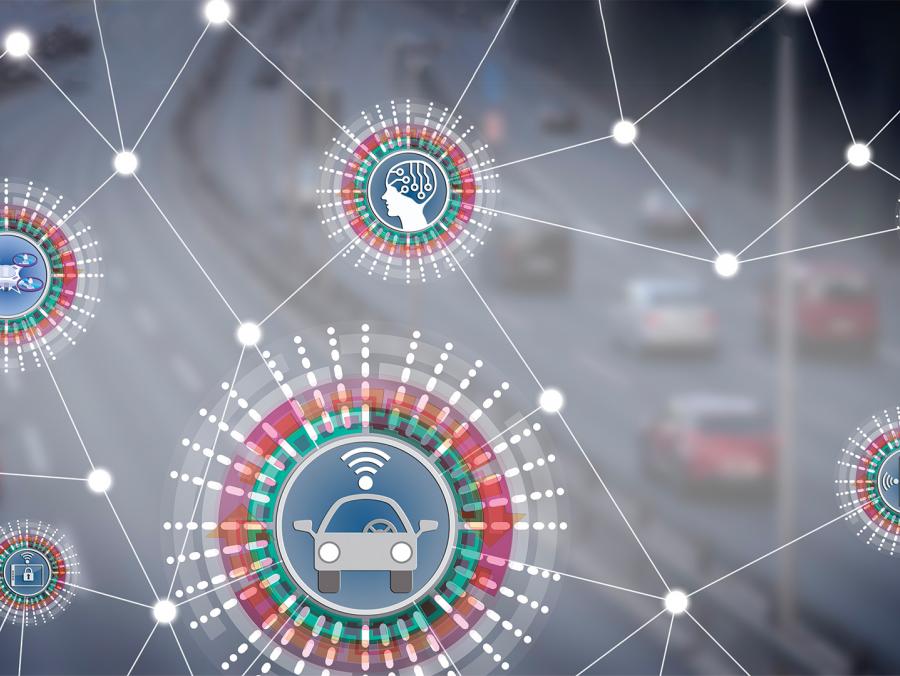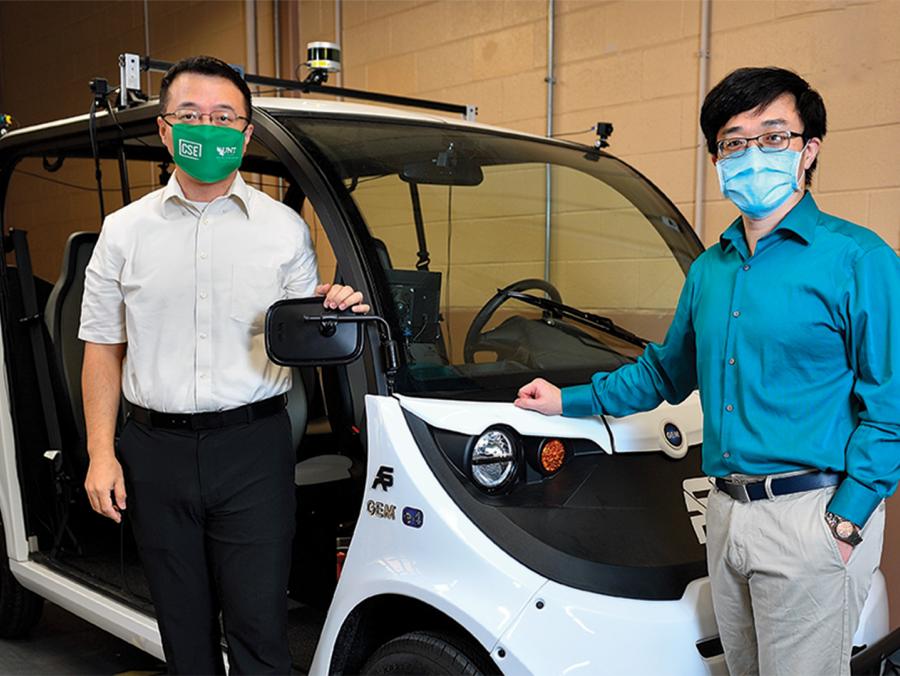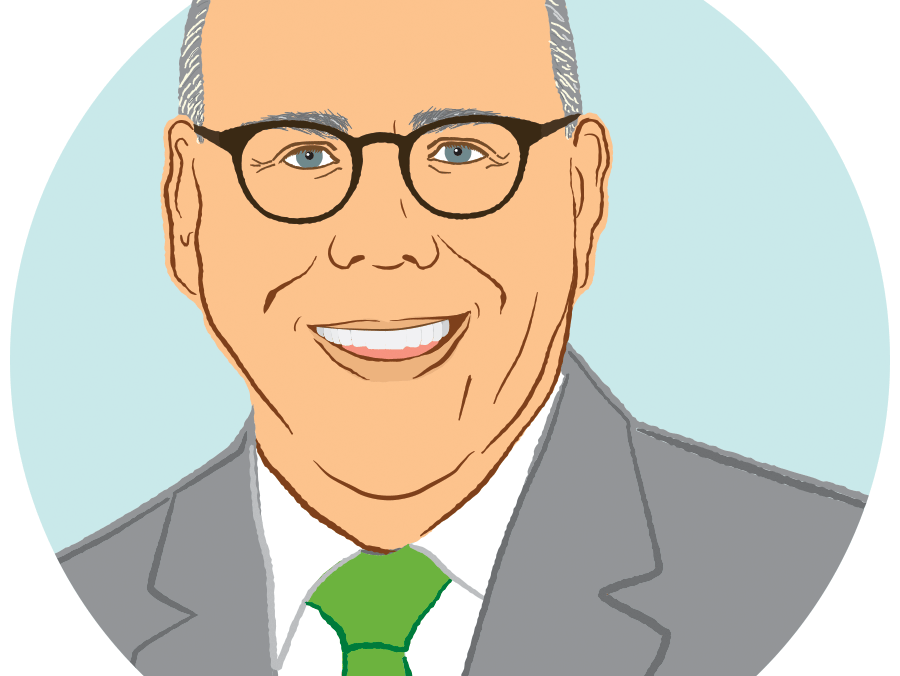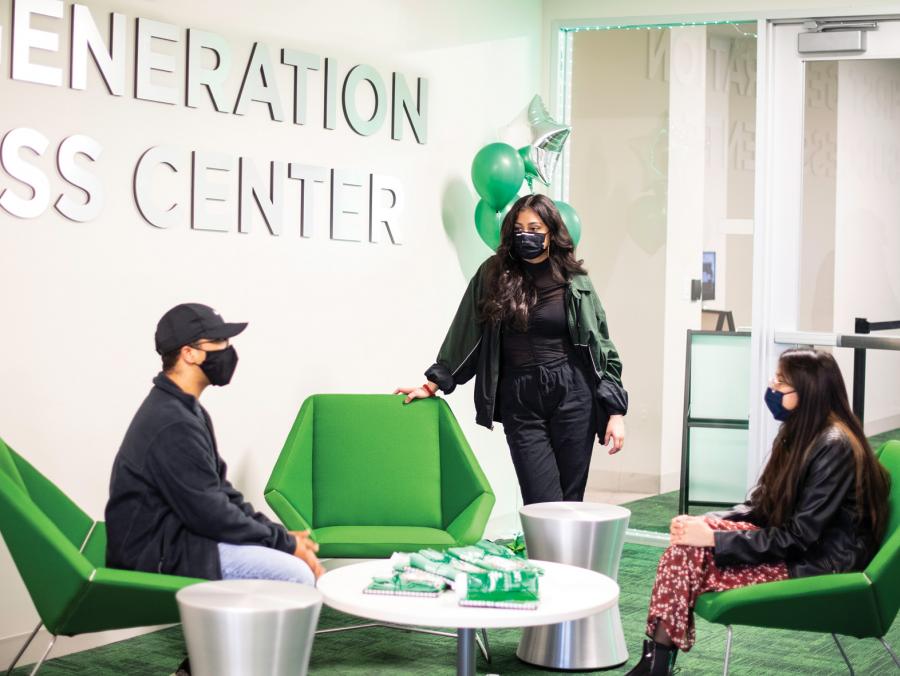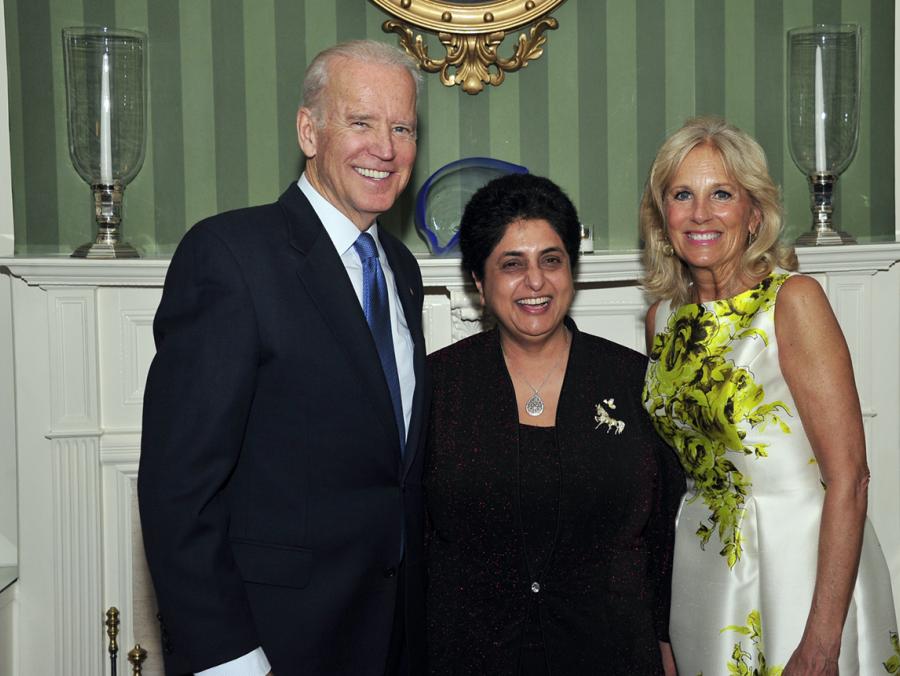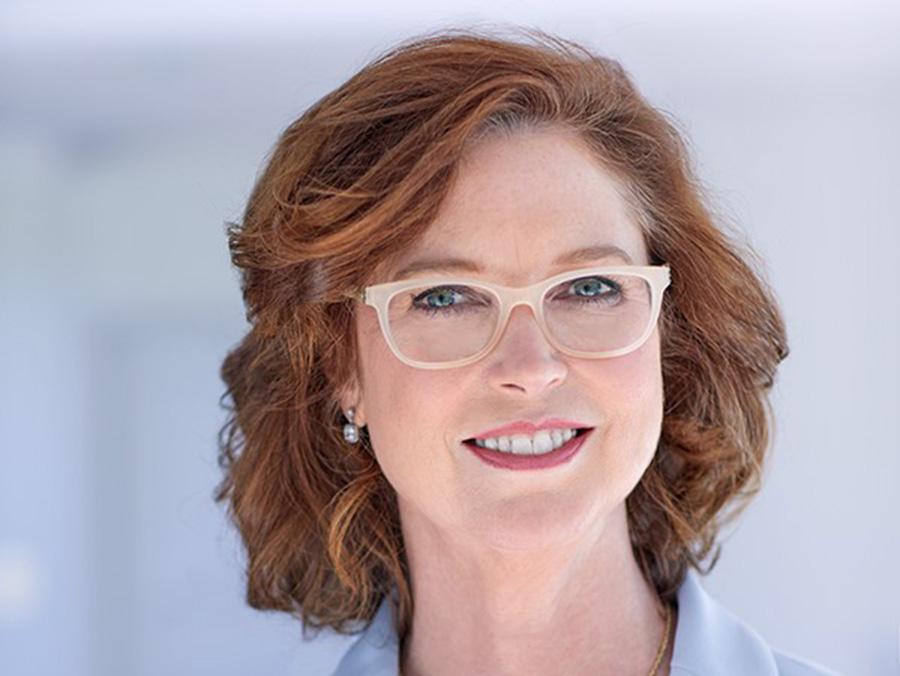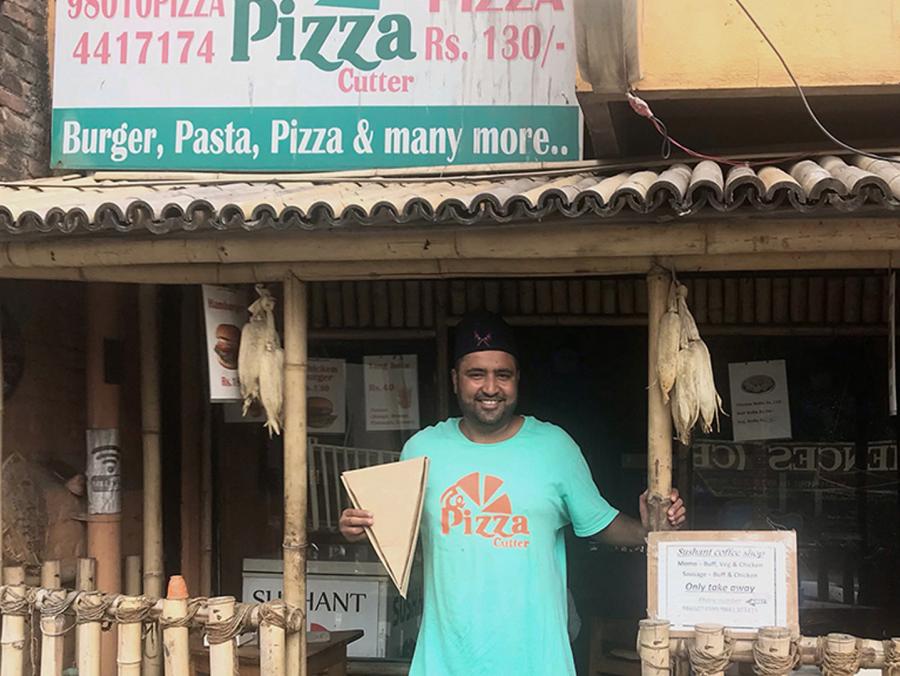t's Election Day in America, and while much of the citizenry is in the throes of nail-biting, nerve-shredding, heat-map-
induced anxiety, this might just be the most relaxing 24 hours Jamie Wilson ('91, '99 M.Ed., '12 Ed.D.) has had in roughly eight months. Denton ISD is shuttered since many of its schools are designated polling locations, meaning the 2020 Region 11 Superintendent of the Year's calendar finally boasts a few blank spots.
He knows the respite won't last long.
"It's been 24/7," says Wilson, who eight years ago assumed the reins as the district's top administrator. "Our leadership team, principals and teachers have worked harder than we've ever worked before."
Ever since COVID-19 forced Denton ISD to close its doors in March 2020 -- along with virtually every other K-12 and higher education institution in the U.S. -- it's been a breakneck effort on all fronts to solve the jigsaw puzzle created by that seemingly no-win situation. Educators are trained to guide students to the right answers, but the questions introduced by an ever-worsening pandemic tested even the most seasoned problem solvers.
How do we provide equitable access to technology? Protect the physical and emotional well-being of students? Reopen our campuses safely? Avoid instructor burnout? Prevent our students from falling irreparably behind?
And now, as the light begins to glimmer at the end of a more than yearlong tunnel, another question has emerged from the slowly dissipating darkness: How do we move forward in a landscape that has been utterly, and perhaps even permanently, altered?
"This is a whole new frontier," Wilson says. "It's like when Lewis and Clark arrived at the Royal Gorge -- what did they have to think about to make it to the other side? And that's where educators are. What do we do? All we know is there's no turning back."
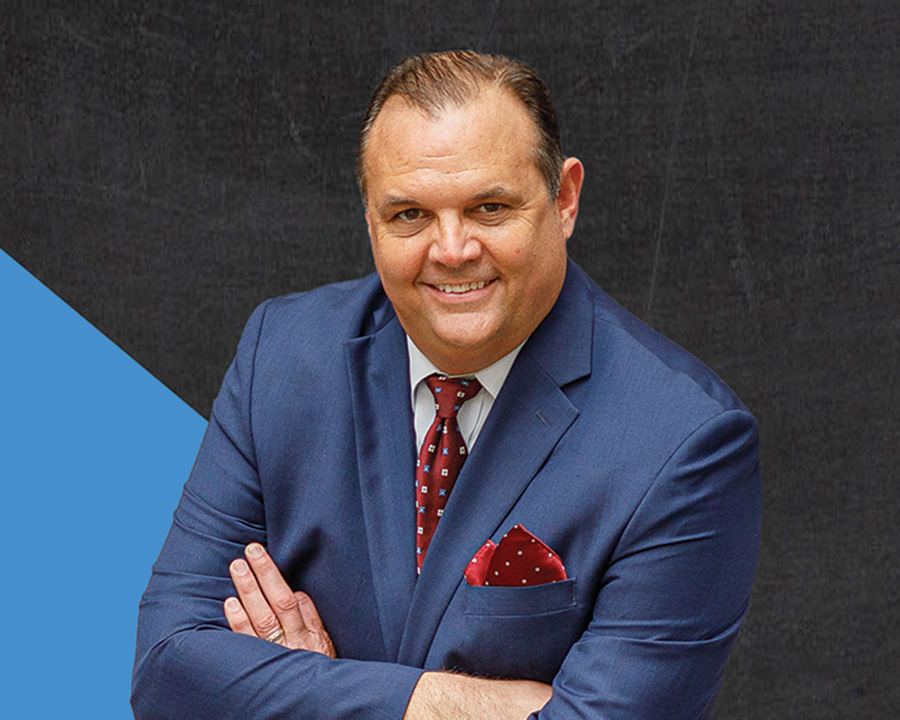
JAMIE WILSON
Superintendent, Denton ISD
Major challenges: As district leader, just about everything under the sun. But one of the biggest was navigating the various expectations of parents, teachers, students and school board members as Denton ISD prepared to reopen for fall 2020, with support breaking roughly 50/50 for resuming in-person instruction.
"The way I approached it was that we have local health experts for a reason," he says. "So we hitched our wagon to the health department early on and worked to follow their recommendations. Then, in the middle of all that, the Texas attorney general comes out and says, 'You don't have to do what the health department asks you to do.'"
Problem solving: Ultimately, the district pushed the in-person start date to the Tuesday following Labor Day, with elementary students returning full time and middle and high school students on a hybrid schedule. Students who preferred to attend classes 100% online had the option of enrolling in Connected Learning, an all-virtual platform, and families could reevaluate the in-person or connected options at the beginning of each new grading period.
"It's just been a constantly evolving process," Wilson says. "Either way, you have to start and stay with the experts."
And while providing academic support has been a major motivator, so has ensuring the basic needs of all Denton ISD students. For 27 consecutive Saturdays during the pandemic, Wilson and other district leaders partnered with the local nonprofit Mission Moms to deliver groceries to low-income families.
"It was just another opportunity to connect with the community," Wilson says, "and put eyes on our kids."
Implications for the future of education: Many saw it in early January, when much of Texas experienced a rare, and surprisingly significant, snowfall (the one that didn't involve rolling blackouts). Several districts opted to keep schools open -- online -- instead of losing an instructional day.
"If we have extended periods of time where schools are closed, like for weather or a natural disaster, there will be ways for students to stay connected and continue with their learning," Wilson says. "Now that we've been through this, we have a toolkit to pull from."

ADAM FEIN
Vice President for Digital Strategy and Innovation, UNT
In February, there were roughly 10,000 Zoom connections in use across UNT. By April -- 500,000.
"We were able to move almost 8,000 courses remote over a long weekend," says Adam Fein, vice president for UNT's Division of Digital Strategy and Innovation. "Let's just say it's been a wild year."
Major challenges: When Fein, an industry leader in online and innovative education, was hired to lead the DSI division in November 2018, he and his team hit the ground running. In addition to pioneering partnerships with entities such as Coursera, Merit America and JP Morgan Chase, they created a Canvas shell for all UNT courses, whether in-person, online or hybrid. Fein's no fortune teller, but by March 2020 -- when all of UNT's 7,700 in-person course sections were forced to transition online in the space of a week -- that move was nothing short of clairvoyant.
"We had put a lot of infrastructure in place that enabled us to get through this situation," Fein says. "I was pretty optimistic that we'd be successful."
But that lightning-fast transition meant many instructors inexperienced in online teaching faced a sharp learning curve. And it was largely up to Fein's division to bridge the gap.
"We knew we had a lot of people who might panic, and we wanted to be a steady, calming source of help," he says.
Problem solving: DSI launched teachanywhere.unt.edu and learnanywhere.unt.edu to provide professors and students with Zoom and Canvas basics, along with tips on everything from online security to accessibility. Whereas online pedagogy trainings in the past typically hosted around 30 faculty members, now hundreds were in attendance.
"I think we did a pretty good job of having the right topics available to faculty, starting with the simple things and moving into the more advanced things," says Fein, who also notes that his team's 24-hour turnaround in providing security provisions and communications to prevent Zoom "bombings" was another important milestone in their ability to respond to an ever-evolving crisis. "I expect post-pandemic, we won't be reverting back to where we were."
Implications for the future of education: Pre-pandemic, about 10% of UNT students were fully online, with roughly 50% having taken at least one online course. A year later, more than 95% have experience with online classes.
"I don't think a lot of people are going to say, 'Let's go back to more paper and scantrons,'" says Fein, whose team works closely with faculty to develop world-class courses using the latest pedagogical strategies and cutting-edge technology. "So I think one of the lessons learned is that we're going to have a lot more people to serve in the digital space. That's our challenge moving forward, and we embrace it."
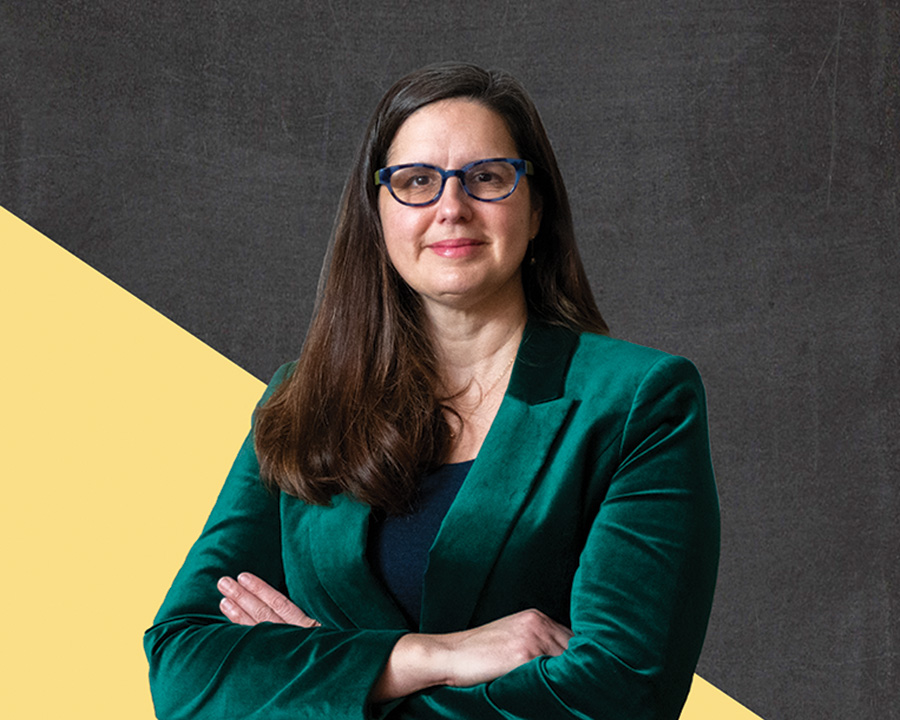
JENNIFER COWLEY
Provost, UNT
Although much of the UNT community didn't feel the effects of COVID-19 until mid-March, university leadership pulled out the campus pandemic plan in January. By February, health crisis teams were activated to monitor the evolving situation, and in early March, UNT's Emergency Operations Center was in full swing.
"I was like, 'OK, this is where the FEMA training kicks in -- this is where I get to use what I've been teaching my students,'" says Jennifer Cowley ('97 M.P.A.), UNT provost and professor of emergency management and disaster science and public administration. "We need to start alerting our community that change is coming, and we need to get ready."
Major challenges: As Provost, Cowley is responsible for UNT's academic mission, which means she had to consider everything from providing equitable access to technology -- administered through initiatives such as the UNT Libraries' laptop checkout program -- to ensuring that professors had the support they needed to teach and financial aid kept flowing. Between the CARES Act and state and federal funds, roughly $20 million was distributed to students in need, with more aid coming.
"We've really focused on being as caring as we can," Cowley says. "For instructors, that means learning to be flexible so that students feel supported, while at the same time helping them maintain accountability so that they're staying on track."
Problem solving: Fears of enrollment declines hung heavy over higher education institutions over the summer, with UNT ultimately posting record numbers (nearly 41,000 students) as the fall semester commenced. Freshman enrollment, however, was noticeably down.
"More students delayed post-secondary education because they wanted to have the full college experience and felt like taking a gap year was maybe in their best interest," Cowley says. (On a side note, UNT is preparing to fully reopen for fall 2021.) "So what can we do to encourage students to make their way back to us?"
One answer from a budget perspective, Cowley says, is retention of talent.
"I don't want to lose our faculty because they are the lifeblood of this university and the ones who ensure our students have a great experience in the classroom," she says.
Implications for the future of education: A broader reach. Part of promoting academic success meant ensuring the 106 international students who couldn't secure a visa due to their embassies being closed were able to begin fall classes via UNT's remote start program. On campus, UNT serves 2,500 international students hailing from 138 different countries. Just imagine the potential for global enrollment with remote learning.
"With remote start, we had students in time zones across the world participating in classes, from 10 at night to 5 in the morning, who really wanted to be part of our Mean Green Family," Cowley says. "We have some really fantastic online programs we've been growing, so we'll see how much that reach can expand."

TYRELL WHITE
Senior Director of Special Education, Beaumont ISD; former Director of Special Education for Clay-Jack Counties Shared Services
For much of his career, Tyrell White ('07) worked as a special education teacher in Dallas ISD, the second-largest school district in Texas with a total enrollment of more than 150,000. So when he assumed the role as director of special education for Clay-Jack Counties Shared Services -- which supports seven districts across a 70-mile radius with enrollments ranging from 120 to 1,000 -- the experience was illuminating.
"Some of these campuses only have one teacher per grade, so it's almost impossible to offer virtual instruction," says White, who in November 2020 became senior director of special education for Beaumont ISD.
Major challenges: There have been plenty. The lack of resources in rural districts (see above). Inconsistent application of mask mandates among schools. And perhaps the toughest of all: helping students with disabilities navigate a devastatingly stressful, and unfamiliar, landscape.
"Virtual instruction doesn't, in most cases, work for our kids with disabilities," says White, who is on the board of directors for the Texas Council of Administrators of Special Education. "And many can't wear a mask because they have sensory issues -- having something on their face for hours sends them into sensory overload."
Problem solving: Special education teachers in the Clay-Jack districts worked to create outdoor learning activities or develop areas for "mask breaks." For kids who can't wear masks, classroom windows were left open to improve ventilation, and individualized, partitioned spaces were designated -- when possible.
"A lot of the older schools aren't built for social distancing -- they have classrooms the size of closets," White says. "So it's really hard to distance in that environment. I think the issue is, no matter which side of the aisle they're on, legislators just haven't been in many schools. They're not educators."
Implications for the future of education: "I hope what comes out of this is that more people will realize and respect the work of teachers," White says. "But one thing that's for sure is we now have plans in place if something like this ever happens again."
But, he says, even once COVID-19 is no longer an imminent threat, the wreckage it left behind will remain.
"Even after we return to 'normal,' the aftereffects of all this -- both from an academic and mental health perspective -- will be felt by all kids," White says, "and in particular, kids with disabilities.
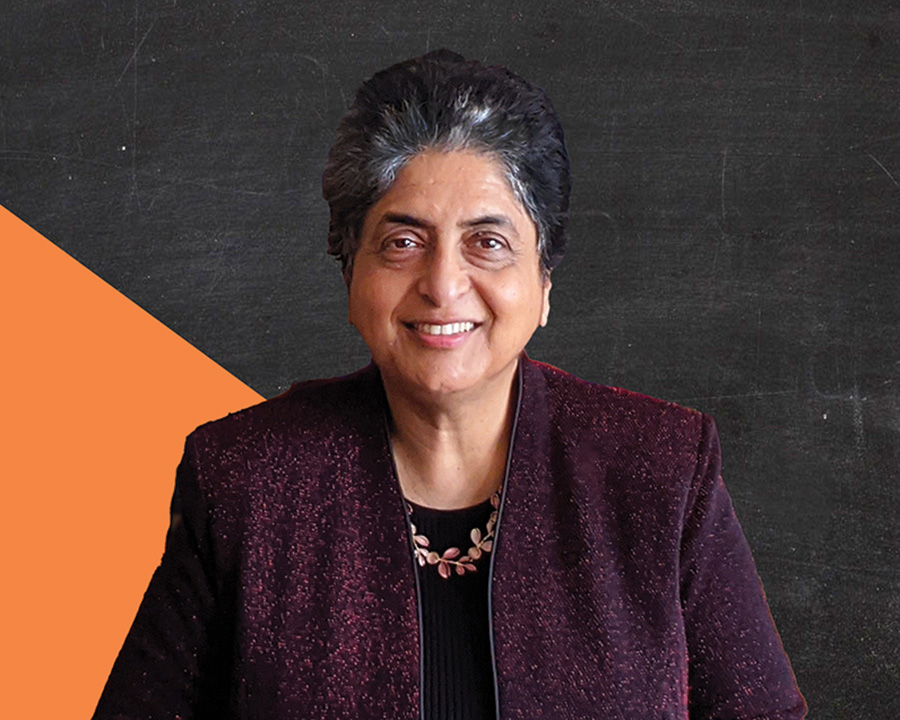
REVATHI BALAKRISHNAN
Teacher, Round Rock ISD; Texas Teacher of the Year, 2016
Revathi Balakrishnan's ('18 M.Ed.) students are ready for their latest hands-on experiment. They may be learning from home, but that doesn't mean every second is spent behind a computer screen. Take, for instance, today's lesson, which involves each student physically dropping books and pieces of paper to explore force and motion before coming back together in groups to record their observations via Google Docs and discuss their findings in Zoom breakout rooms.
"This has been another opportunity for students to learn independence," says Balakrishnan, a fifth-grade teacher in Round Rock ISD and the 2016 Texas Teacher of the Year. "We do a lot of hand-holding in school, but I don't believe in that philosophy. I believe in giving kids time to think and explore and make mistakes -- and learn from them."
Major challenges: There's one risk that remains especially inescapable for the entire teacher pool, whether they're teaching in-person, virtually or both: burnout.
"You have to be good at your job, but you also have to be realistic given the circumstances," Balakrishnan says. "Some teachers are working 14-hour days trying to implement everything online that they implemented in the classroom. You can't do that. After nine hours, I walk away from my computer."
Problem solving: As a member of the Leading the Profession Task Force and the Texas Aspires Educator Board, Balakrishnan advises teachers to reach out to mentors who can help them prioritize amidst the chaos.
"This pandemic has created a lot of stress, and teachers have been the ones expected to take everything in and still survive," she says. "Veteran teachers can help you weed out the noise and stay true to yourself. If you don't have a happy teacher, you won't have a happy classroom."
Implications for the future of education: A more sustainable approach.
"Every staple is a landfill problem," says Balakrishnan, who grew up acutely aware of environmental issues in her native India. "I mean, wouldn't it be great if you had a school district where one teacher per grade taught virtually and students who wanted to learn from home could? It would alleviate overcrowding. The pollution would go down. Not all is bad with online learning."

ALEJANDRA MEDRANO
First-Year Teacher, Irving ISD
As an interdisciplinary studies major, Alejandra Medrano ('19) learned the ins and outs of classroom management from UNT professors she describes as "amazing." Still, neither she nor her professors imagined a scenario in which a teacher would be tasked with managing more than a dozen elementary students on Zoom, in addition to in-person learners. But in June, when the first-year teacher was hired by Irving ISD to teach fifth grade dual-language math and science, that was exactly the experiment that awaited.
"It was difficult, because you learn the traditional techniques of handling behavioral issues in the classroom, but on Zoom, what do I do?" Medrano says. "Turn off their screen? Mute their microphone? Kick them out? I can't do that. They won't come back."
Major challenges: In addition to the classroom management quandaries presented by Zoom, there were the anxieties of welcoming kids back in person as COVID-19 raged on.
"I was worried that it would be a constant struggle to have students wear their mask or make sure it was over their nose," Medrano says. "And when we first started, it was difficult for them. But my students have been good."
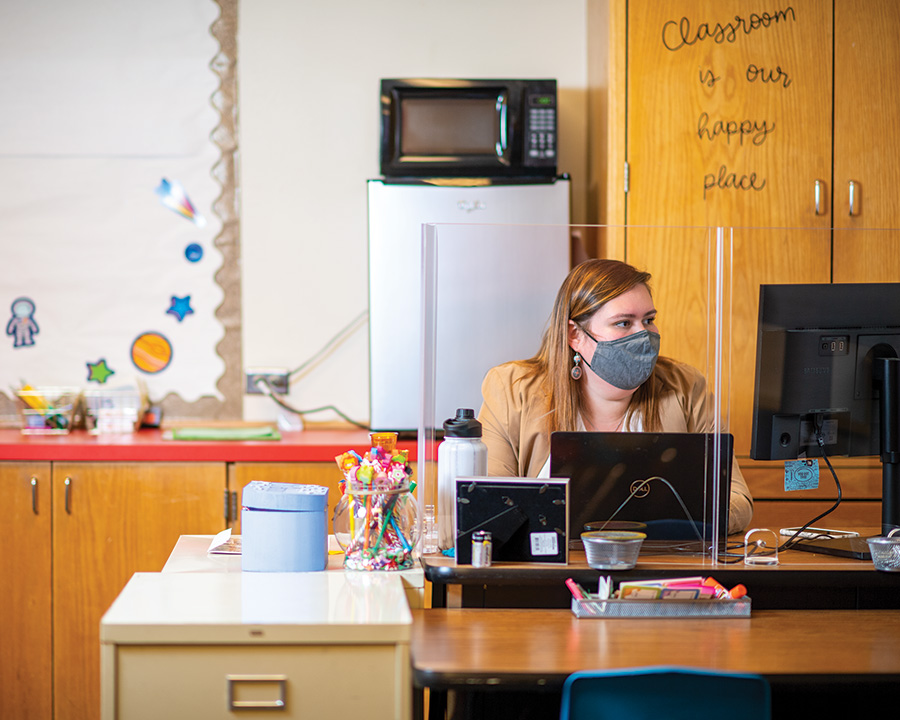
Problem solving: To increase engagement, particularly among her online students, Medrano learned the value of flexibility -- and a points system.
"Once they earn enough points for participation, they can select something from the online prize box," she says. "And I mail it to them with a little note. That's gone a long way in building relationships with them because they see I told them I'd do something, and I did it."
Medrano also carves out social-emotional learning time into each day as a way to better understand her students and gauge their overall well-being.
"I just ask them about their day and how it's going," she says. "Some kids are super open about it, and some don't want to talk about it. Those moments are check-ins where I can let them know if they don't want to say anything in front of the class, that's fine, but they can always talk to me one on one."
Implications for the future of education: More excitement on everyone's part to be back in the classroom -- and cautious optimism about what that may mean for more positive student interactions.
"The five kids I have in the classroom have become best friends -- they can't be picky about who they play with," Medrano says. "I'm hopeful students will come back to in-person schooling ready to learn and build better relationships."

ANA LOPEZ
Associate Professor of Metalsmithing and Jewelry, UNT
As an associate professor of metalsmithing and jewelry, Ana Lopez is known for crafting incredible pieces. But since last March, she's expended nearly as much energy (or more) crafting videos -- in fall 2020 alone, she shot 75 video lessons and announcements. Since social distancing prohibits the normal approach of students crowding around Lopez as she demonstrates a new skill, they instead are tasked with watching demo videos in advance of class. As with many flipped classroom models, not everyone completes the homework -- meaning students play the videos during in-person class time.
"I walk around the studio, and I hear my own voice coming out of 10 different cell phones," Lopez says. "It's really strange."
Major challenges: There's the time it takes to prepare, shoot and edit the instructional videos, for one thing. This semester, her classes are capped at 18 students, and for social distancing purposes, Lopez typically has to break them into four groups working on four different aspects of a project -- meaning four different instructional videos have to simultaneously be prepped and ready to go for a single class period.
"It's exhausting," she says.
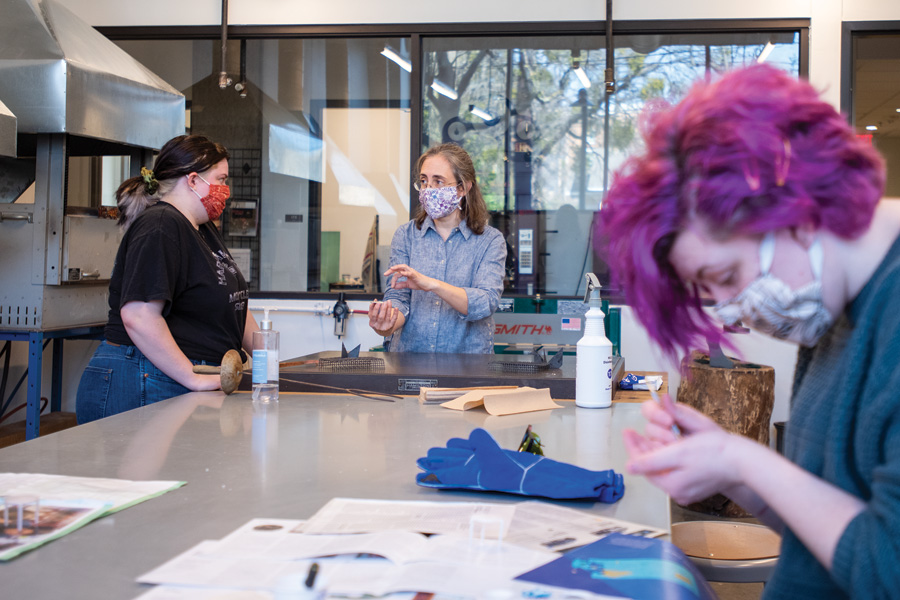
Problem solving: Lopez has worked to ensure her classes -- which have all been in person since fall -- meet the strictest safety protocols. She enlisted the help of department technician Sarah Loch-Test, who over the summer set up sneeze guards at each workbench and ensured every work area was spaced at least 6 feet apart.
"I cannot imagine where we would have been at the start of the fall without her," Lopez says. "We're very lucky we have a technician -- not all programs do."
Implications for the future of education: A more democratic approach. Lopez can't wait to fully return to more traditional studio-based lessons, but she notes others in the metalsmithing community are embracing online and video-based learning as an opportunity to reach more students in more locations.
"You can see that pattern throughout history where an easier way to learn something becomes much more widespread," Lopez says. "While it may dilute the knowledge, it also makes it more accessible to a lot of people."
BY THE NUMBERS
- 93% - Percentage of people in U.S. households with school-age children who reported that their children engaged in some form of "distance learning" from home.
- 85.8% - Percentage of people in U.S. households with incomes of $100,000 or more who reported that their children were using online resources for distance learning. By contrast, 76.5% of households with incomes of $50,000-$99,999, and 65.8% of people in households with incomes of less than $50,000, reported that children were using online resources.
- 84.1% - Percentage of adults in U.S. households where at least one adult was planning to take post-secondary classes this fall, but for whom those plans have either been canceled or changed in some significant way.
- 64.7% - Percentage of students enrolled in degree-granting postsecondary institutions in the U.S. who had never taken a distance-learning course prior to the pandemic.
- 78% - Percentage of countries that used television programs as a distance-learning method during the pandemic. 74% also used government-supported online platforms, 59% used radio learning programs, and 54% used SMS/mobile technology or social media.
- 307 Million - As of December 2020, the number of children worldwide who were out of school due to school closures linked to the coronavirus pandemic.
- 3 Million - Estimated number of students attending in-person classes in Texas public schools (as of January 2021).
Sources: U.S. Census Bureau's Household Pulse Survey; UNICEF; UNESCO; Texas Department of State Health Services; National Center for Education Statistics



